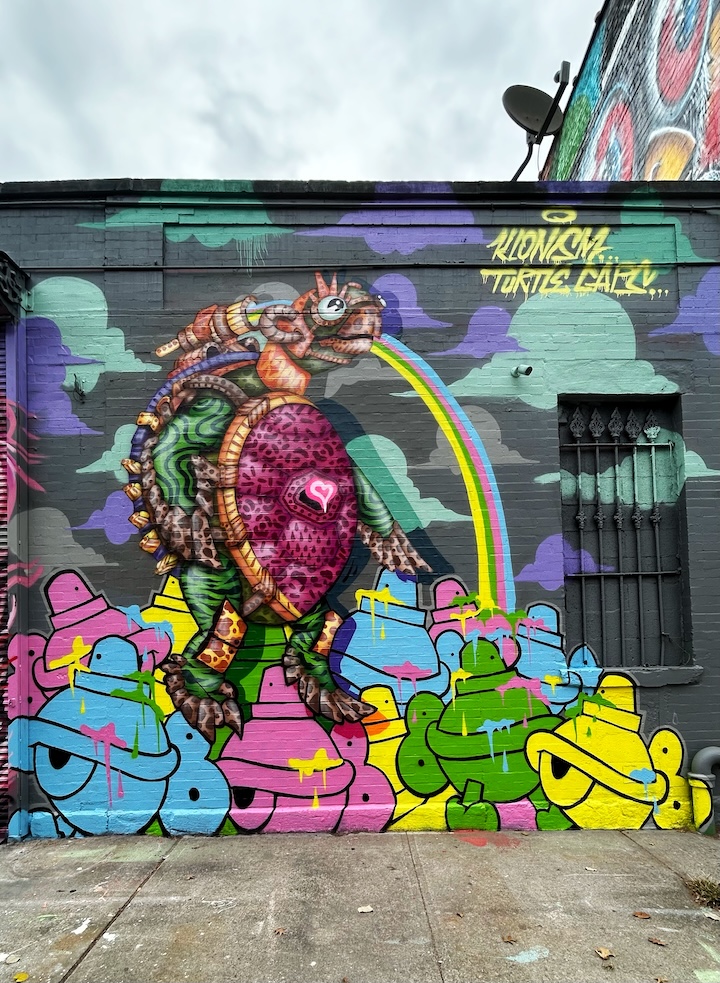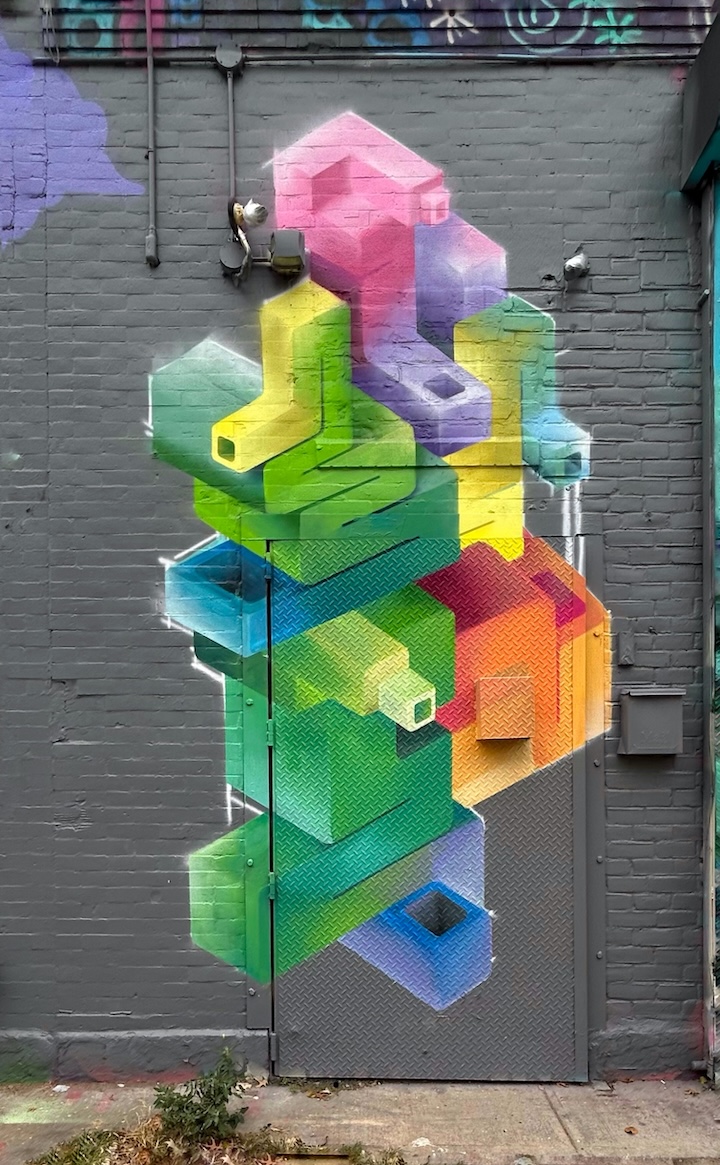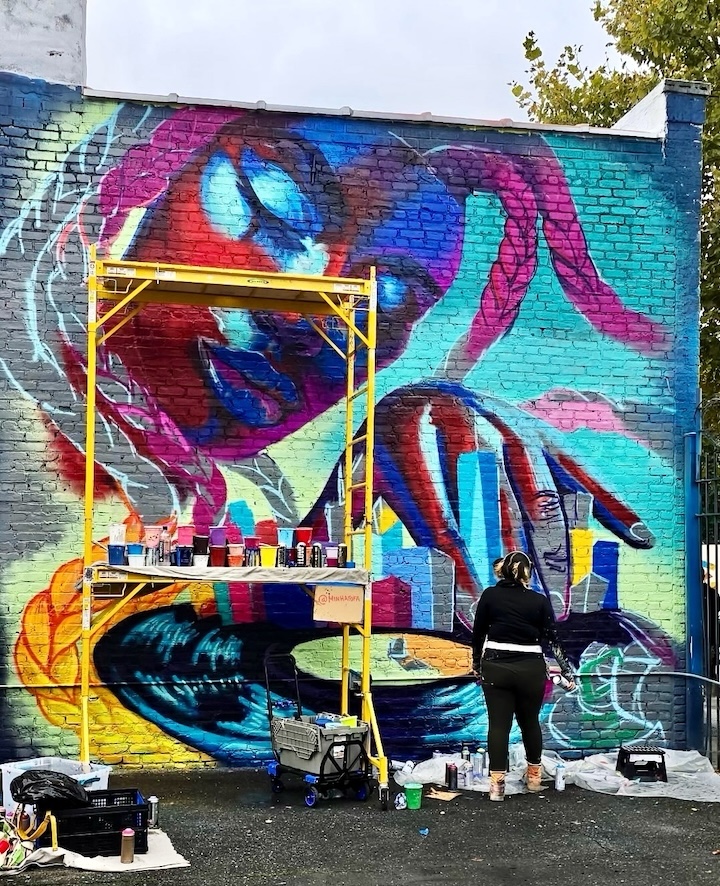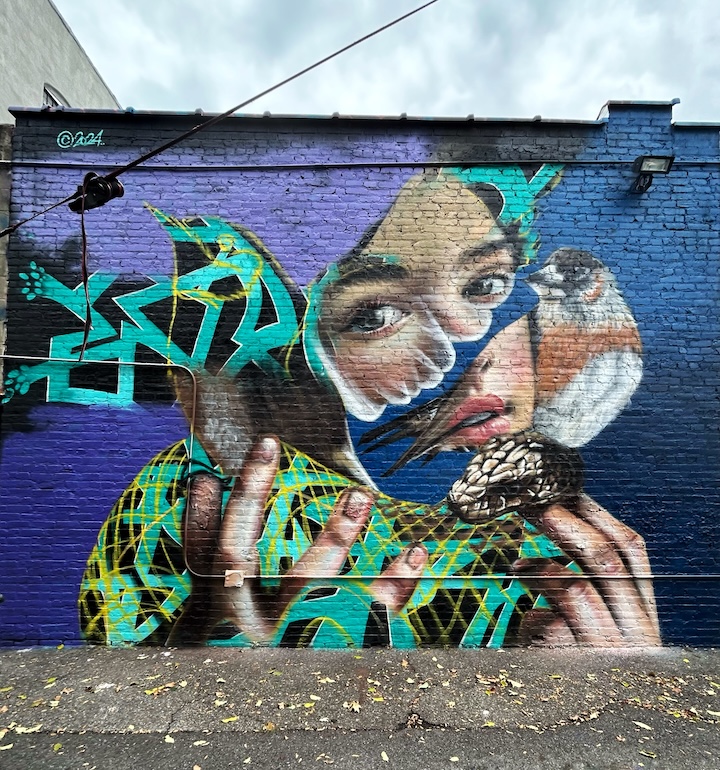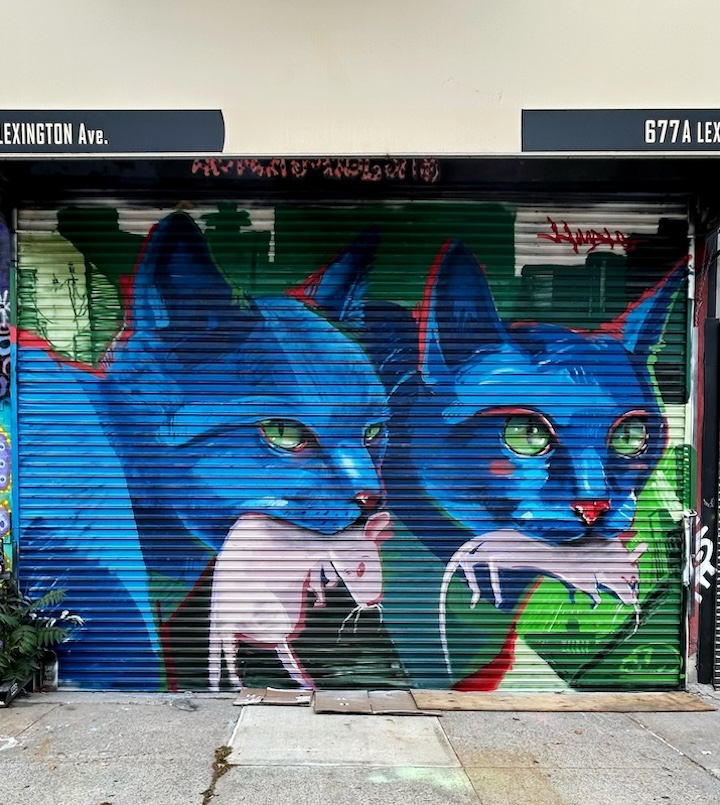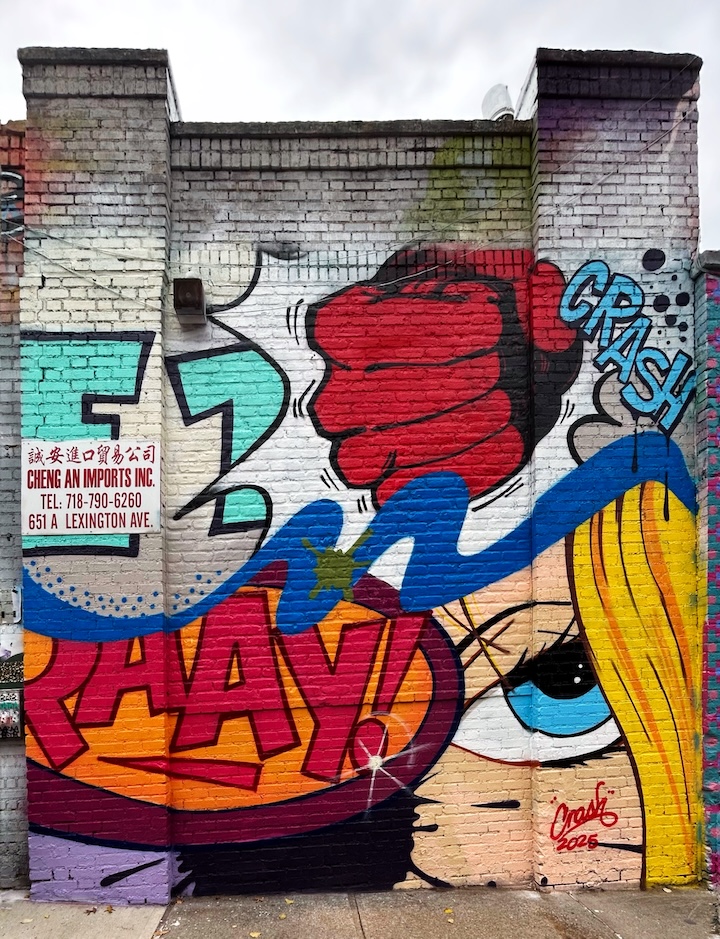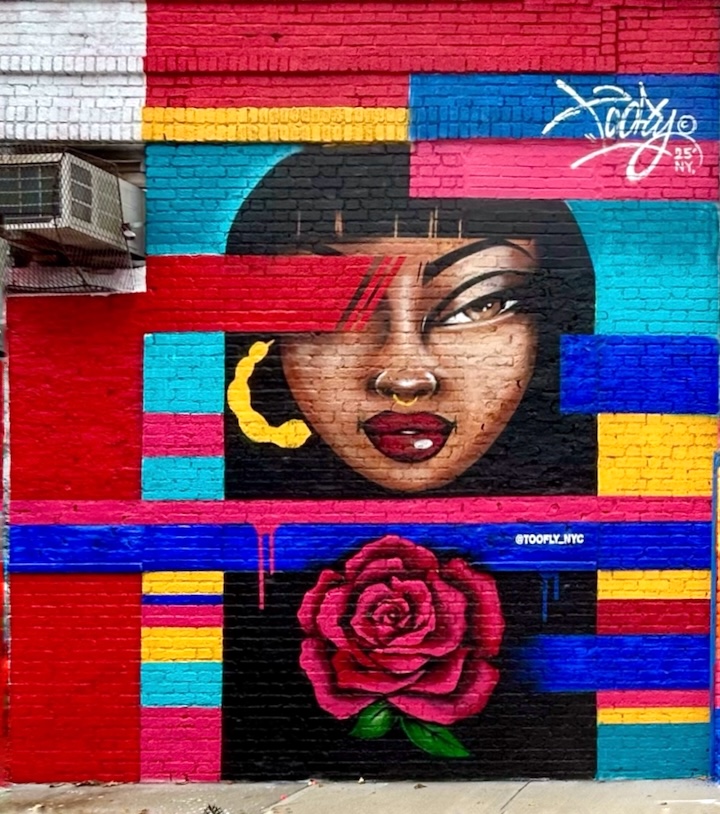
An extension of Underhill Walls and just a short walk away, Washington Walls continues to bring intrigue and beauty to a formerly neglected crosswalk in Prospect Heights, Brooklyn. The whimsical image featured above was painted by multidisciplinary Brooklyn-based artist Jamia. What follows are a few more murals painted this past fall — all under the curatorial direction of Jeff Beler.
Miami-based Argentinian muralist Chuave
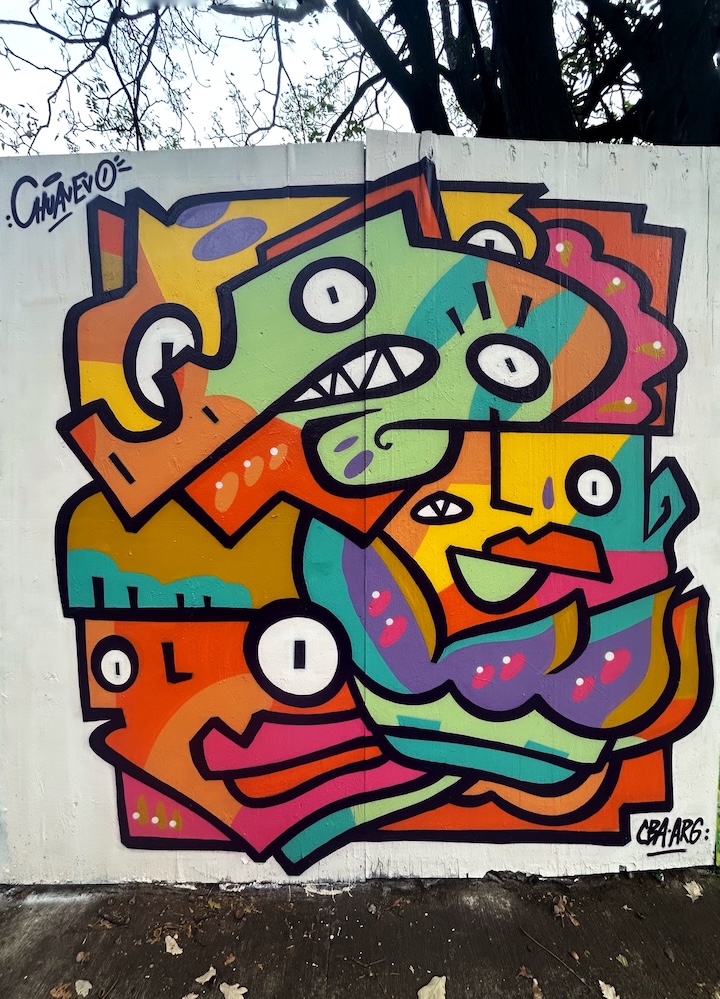
Queens-based Colombian multimedia artist Fernando Garcia aka Nandos
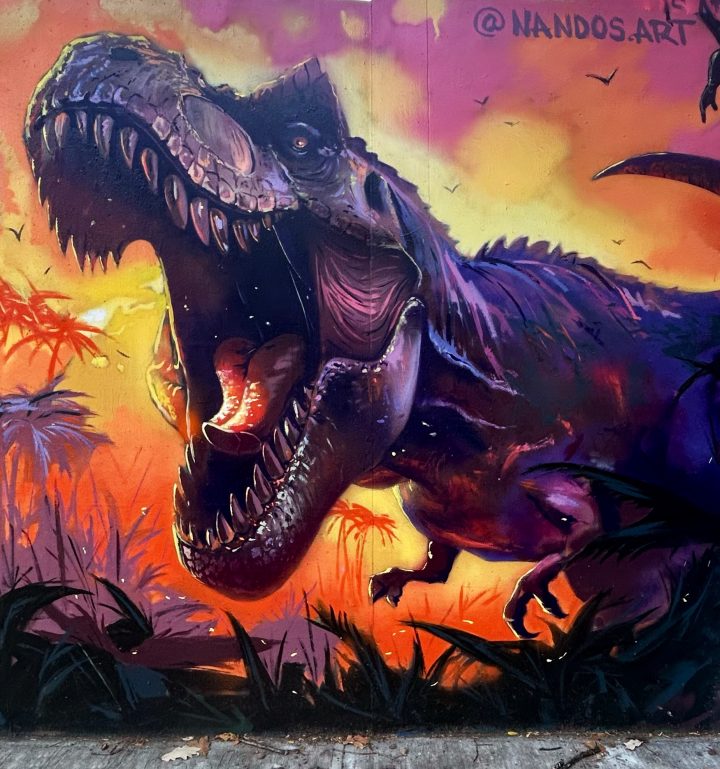
Brooklyn-based artist Kelvin Morel aka Kam
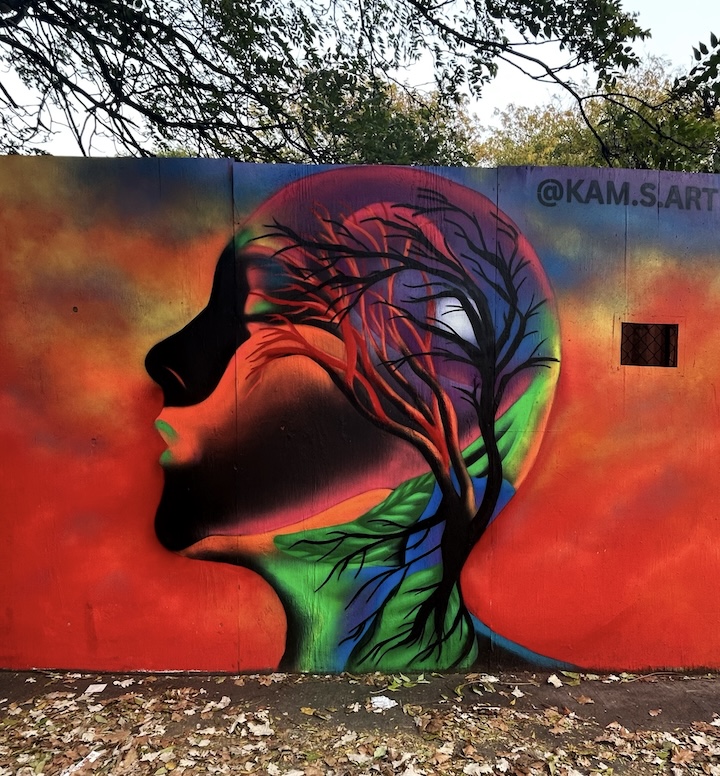
Queens native Jeff Rose King
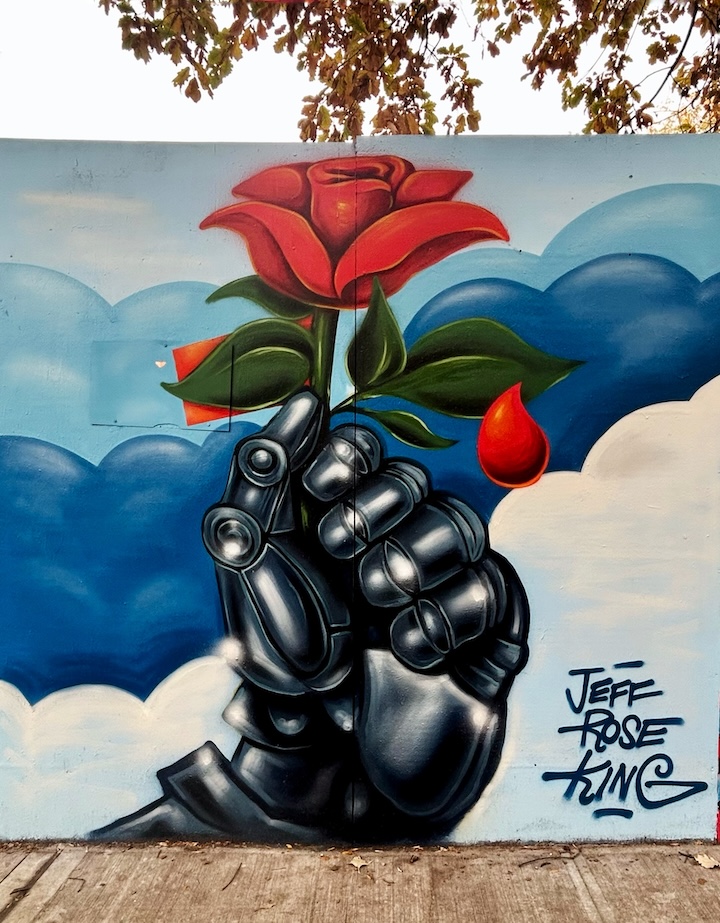
Buenos Aires-born, NYC-based artist Sonni

Photos: Lois Stavsky
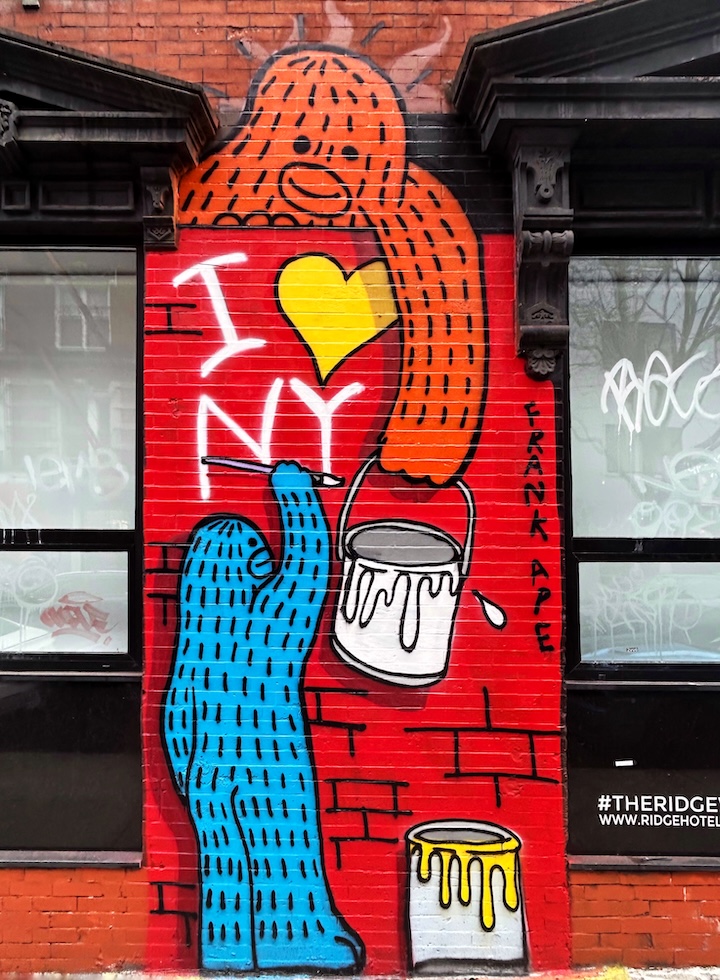
Pictured above is New York–based artist Brandon Sines‘ visual ode to NYC featuring his beloved, magical creation Frank Ape. What follows are several more homages to NYC off and on Houston Street that I captured this past Sunday.
The legendary Bronx-based artist John “Crash” Matos salutes the late Keith Haring in his ode to Downtown NYC. This mural also appears on the walls of the Ridge Hotel directly off East Houston Street.
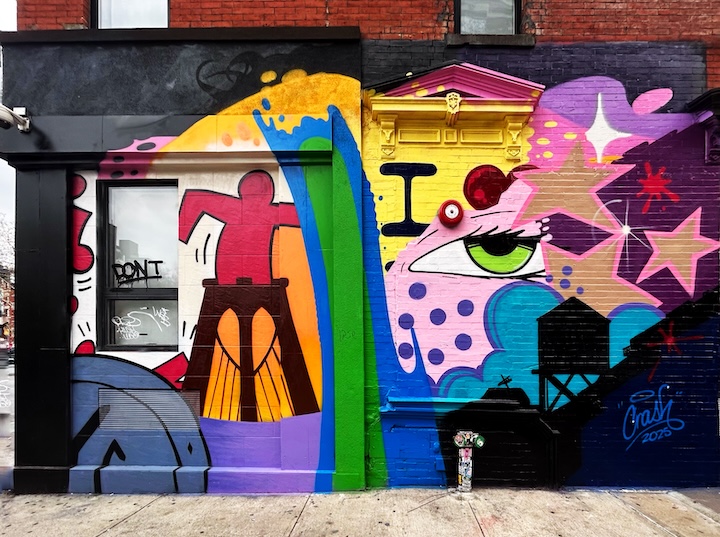
Close-up of John “Crash” Matos mural featuring the artist’s signature eye
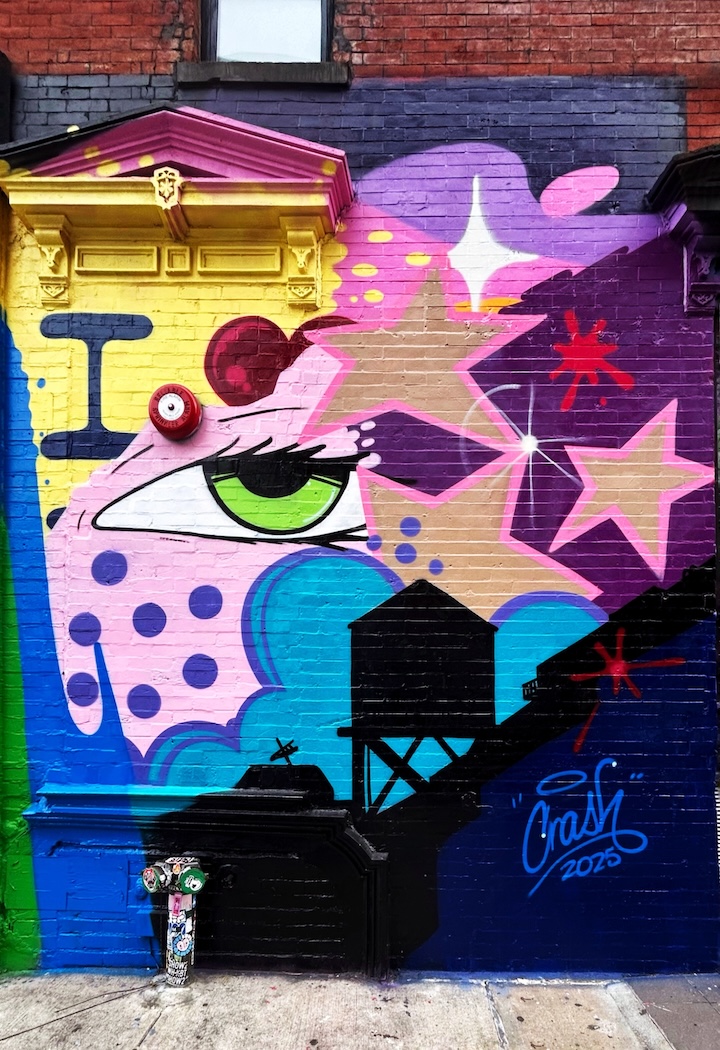
GRAFSTRACT originator Fumero brings his distinct aesthetic to Avalon Chemists’ on the corner of Houston & 2nd Avenue
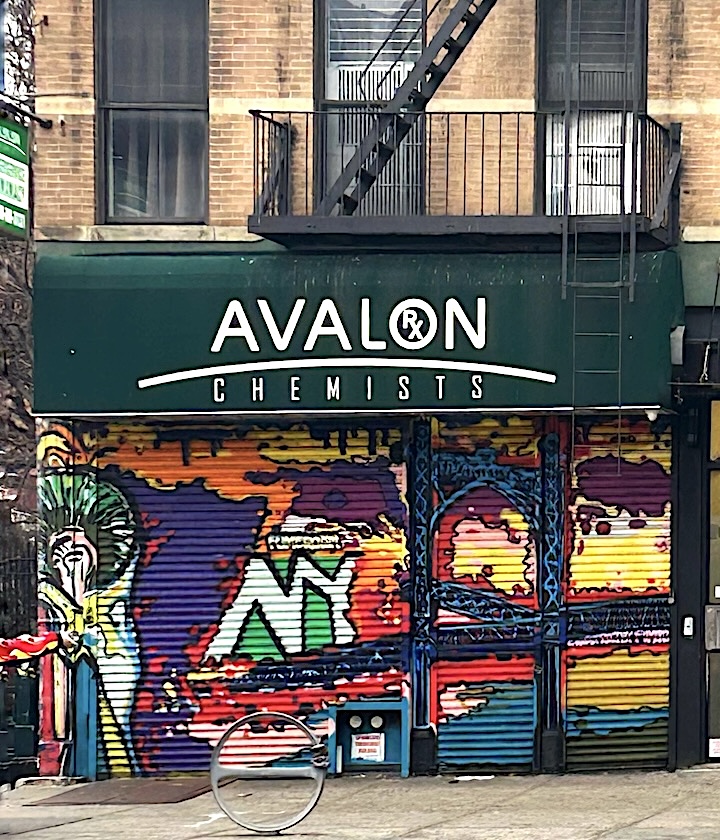
Japanese artist Tomokazu Matsuyama‘s “homage to New York’s diversity” on the iconic Bowery Wall
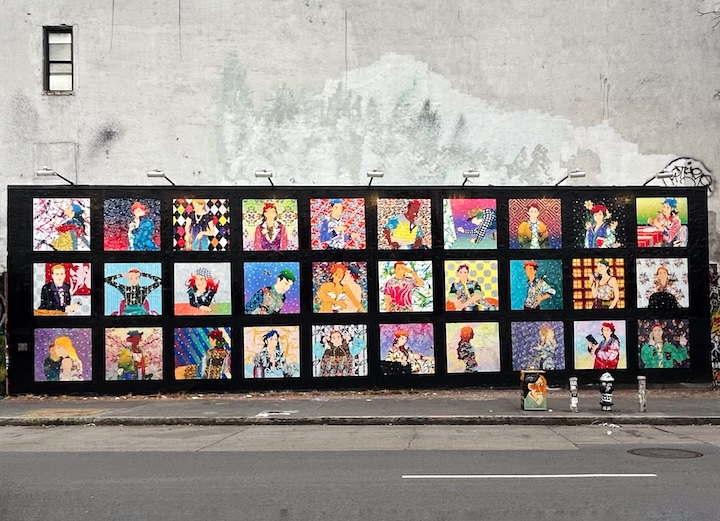
Photos: Lois Stavsky
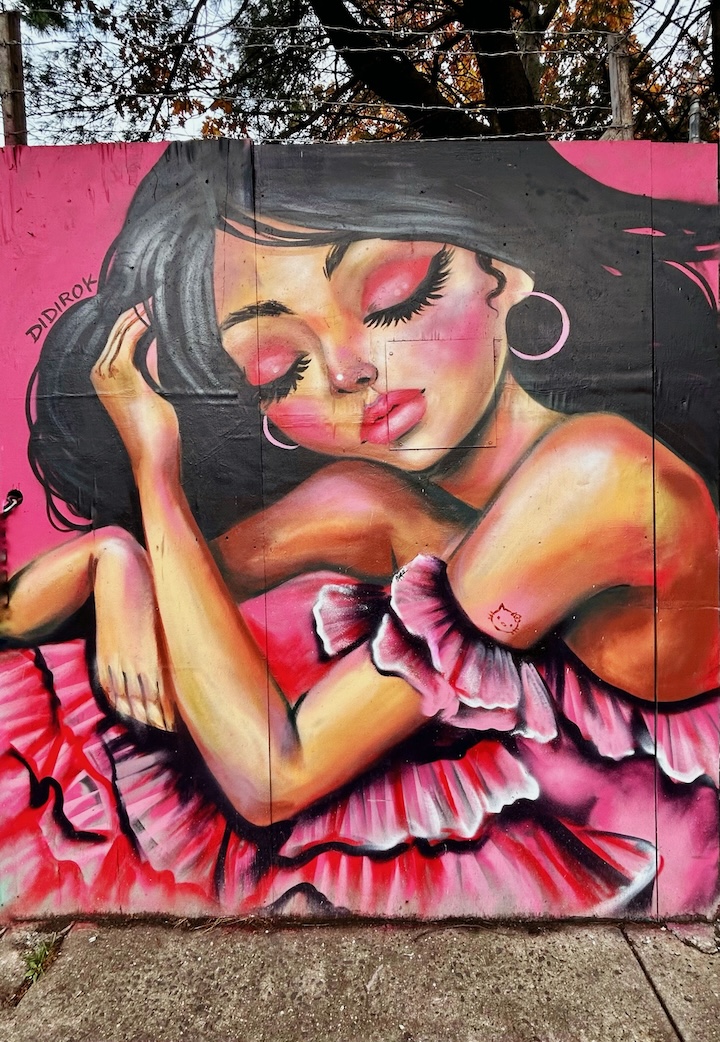
Directly off the Alabama Avenue stop on the J train is an open-air gallery featuring over a dozen wonderfully varied and alluring murals. Under the curatorial direction of Queens Art Collective, the East New York Walls attest to the diversity of urban art — as they range from graffiti to stencil art to portraiture. The sumptuously seductive image featured above was painted by Miami-based Peruvian-American artist Diana Contreras aka DidiRok. Several more images captured last week while visiting these walls follow:
Veteran stylemaster Curve
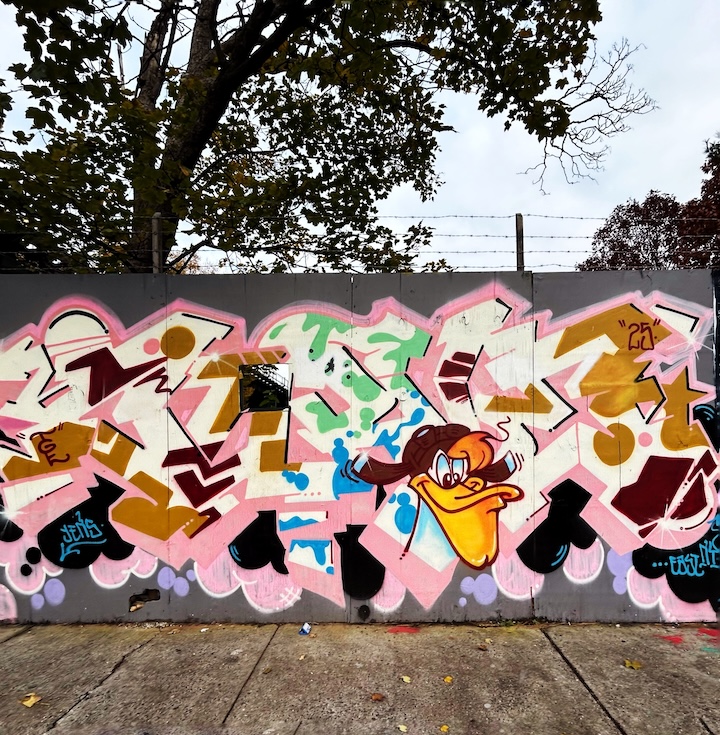
NYC-based, Puerto Rico-born artist Epic Uno
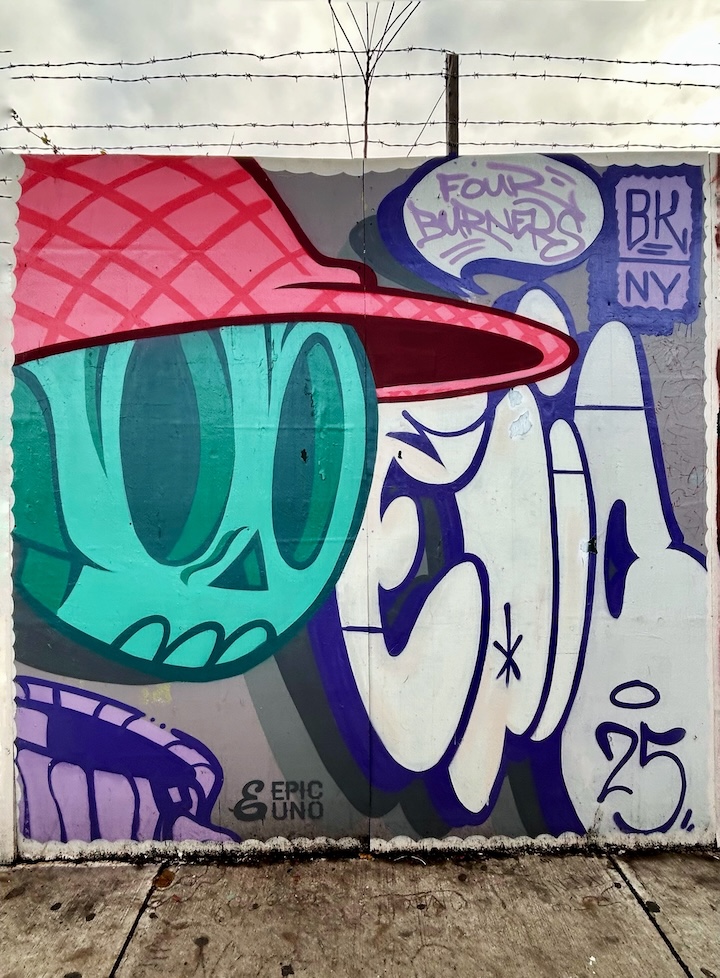
Brooklyn-based Colombian artist Praxis
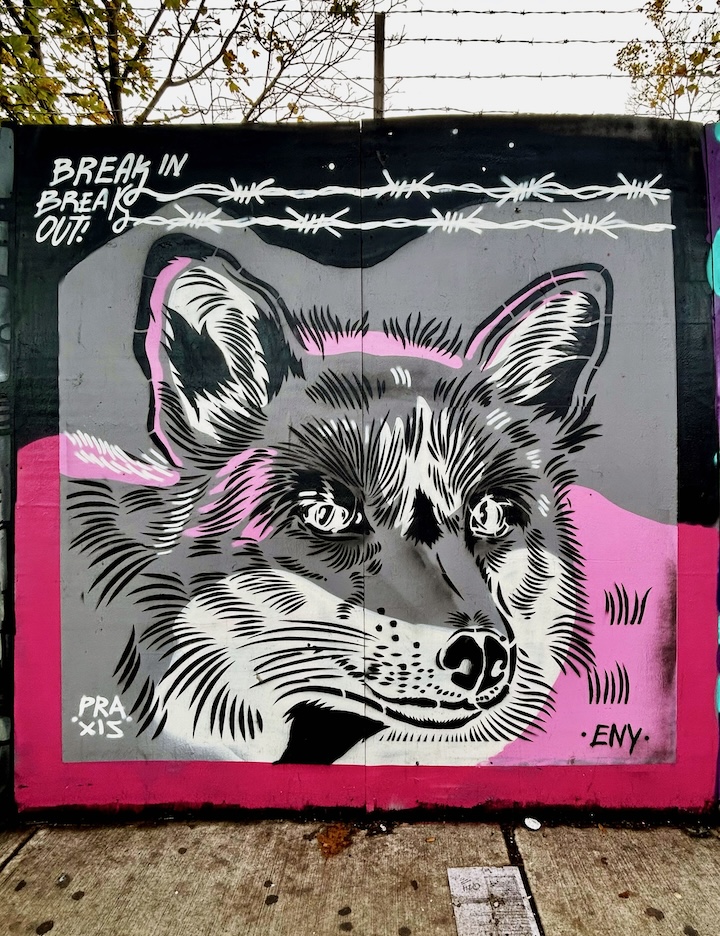
NYC-based artist and arts educator Carnivorousflora
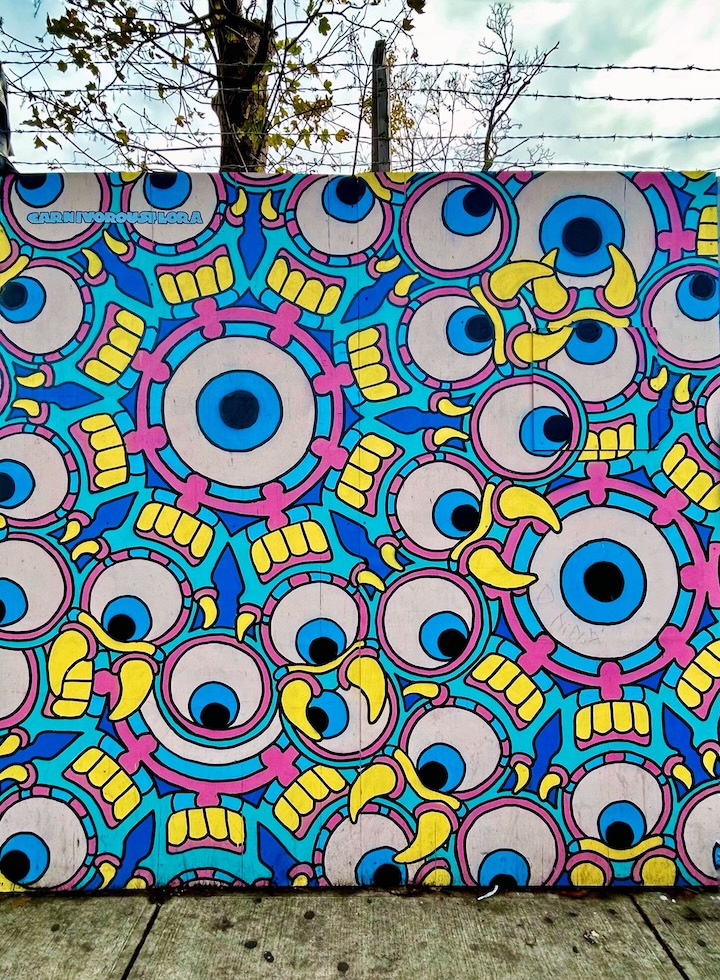
Philippines-born, Queens-based artist Jappy Agoncillo
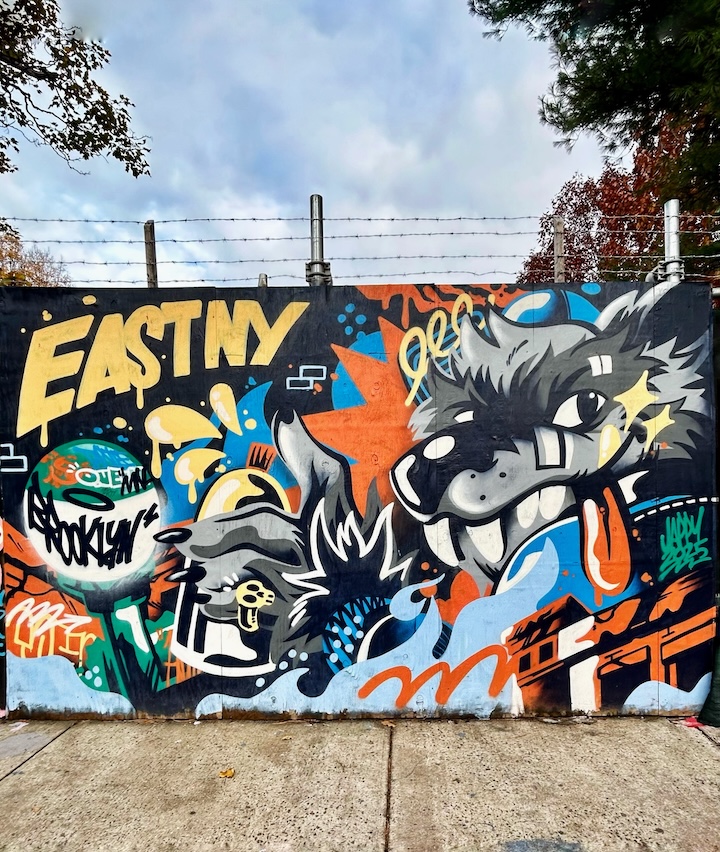
Buenos Aires-born, NYC-based artist Sonni
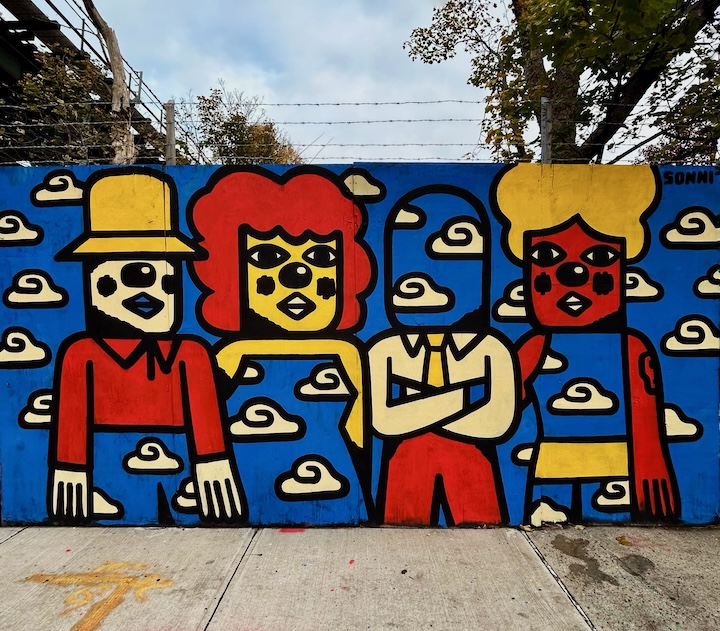
Note: Check out the Street Art NYC Instagram for more images from East New York Walls
Photos: Lois Stavsky

Currently on view at the corner of Underhill Avenue and Saint Johns Place is “What’s Your Sign?” — a captivating series of murals celebrating our Zodiac signs. The image featured above, a whimsical mix of all of our astrological signs, was fashioned by Rio de Janeiro-born, Brooklyn-based artist Barbtropolis. A small selection of additional Zodiac murals — painted under the curatorial direction of Jeff Beler — follow:
Queens-based muralist OG Millie does Sagittarius
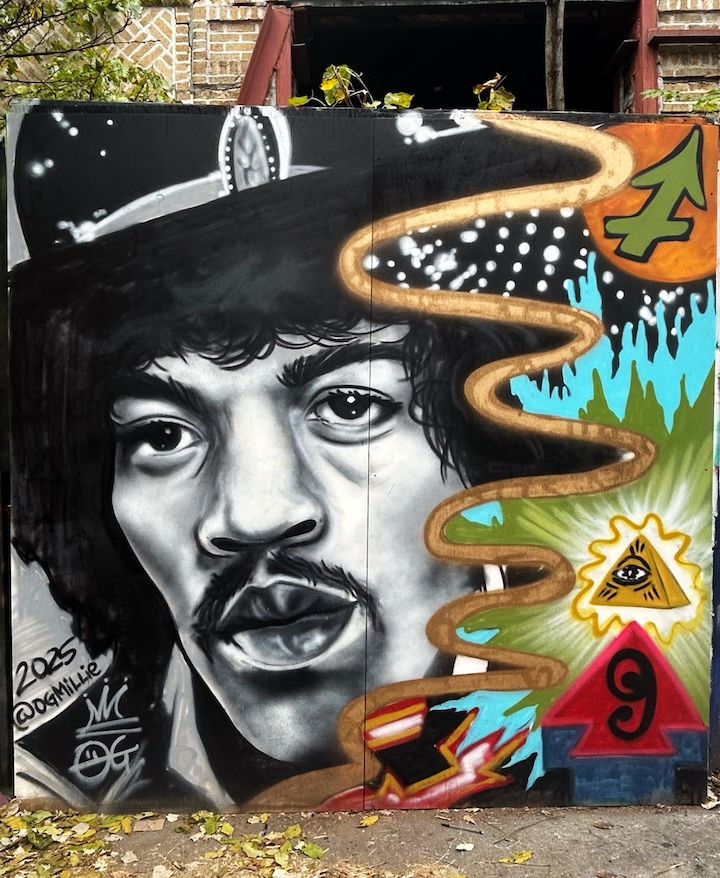
NYC-based artist and arts educator Marissa Molina does Taurus
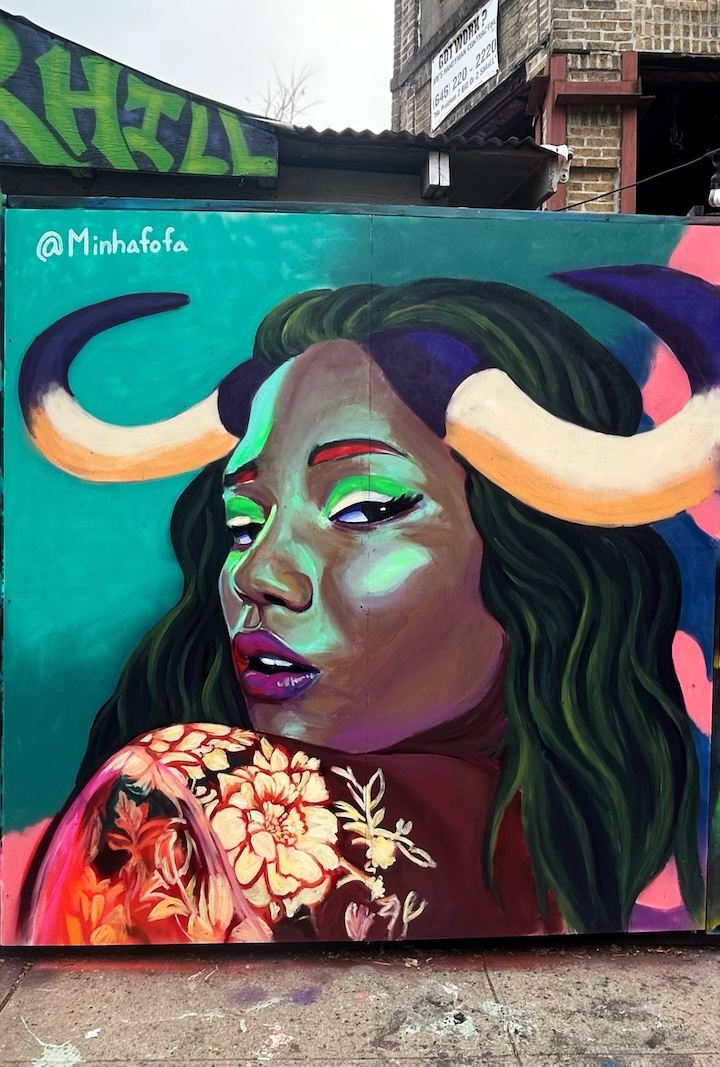
Ithica-based multimedia artist Clove and Bogota, Colombia-native Calicho Arevalo do Libra
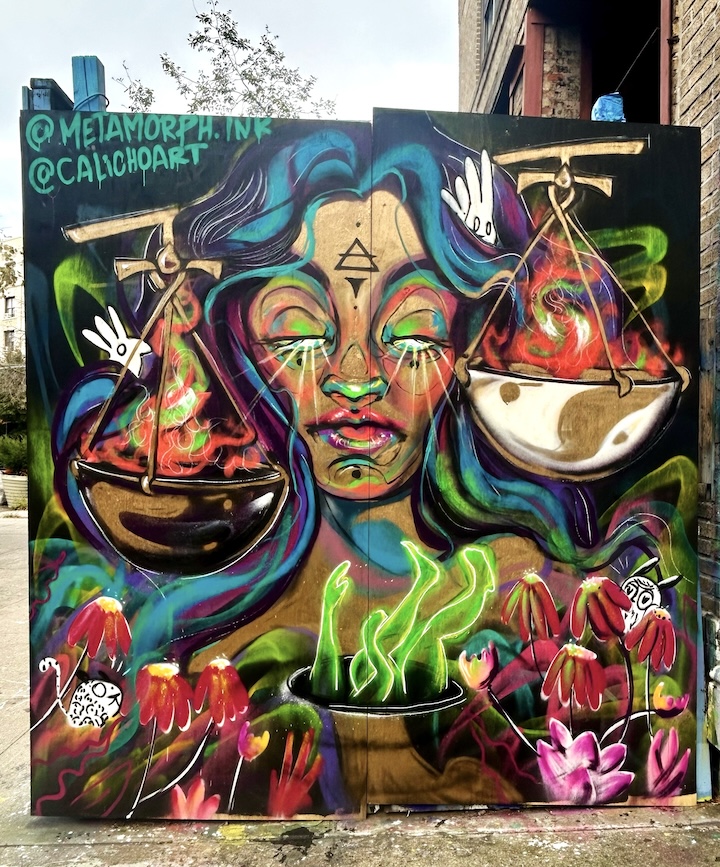
Miami-based Nicaraguan artist Luis Valle aka El Chan Guri does Aires
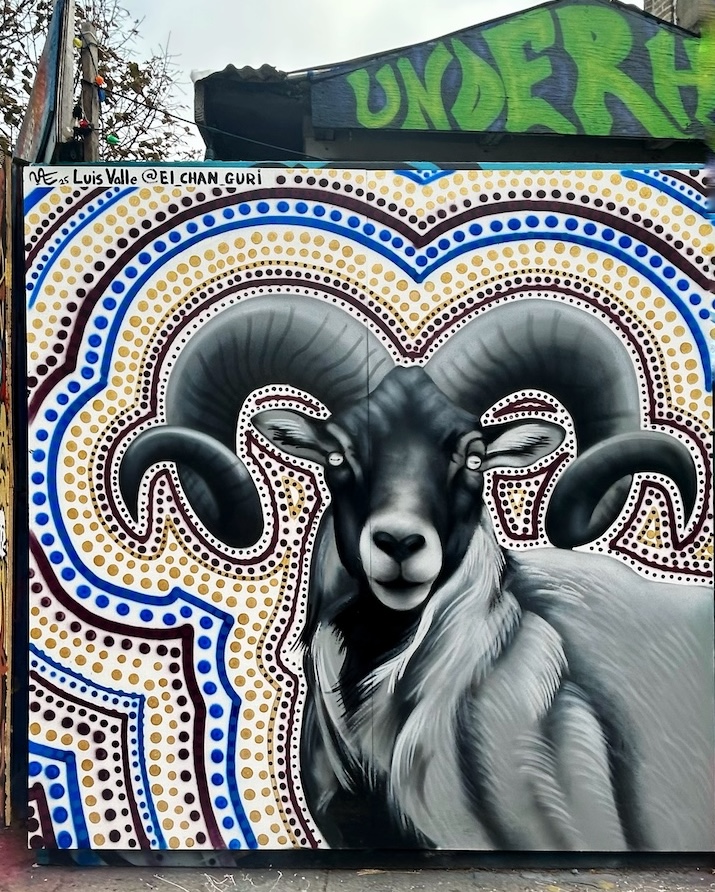
Dumbo-based Craig Anthony Miller and veteran writer BC NBA do Leo
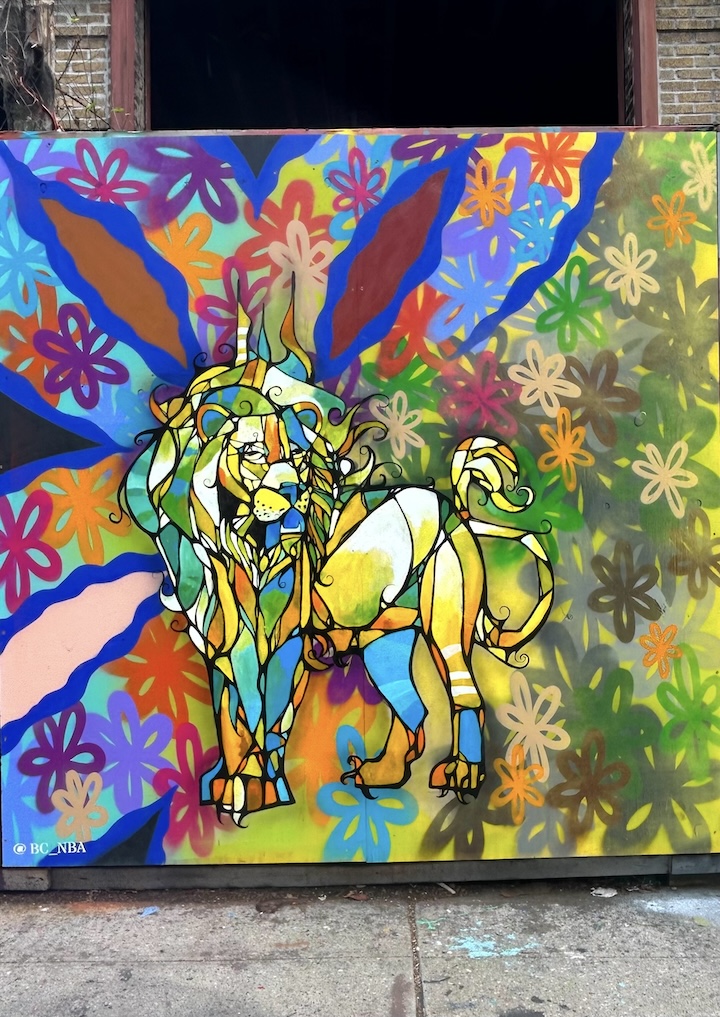
Brooklyn-based, Beijing-born muralist, illustrator and educator Peach Tao aka peacheeblue does Pisces
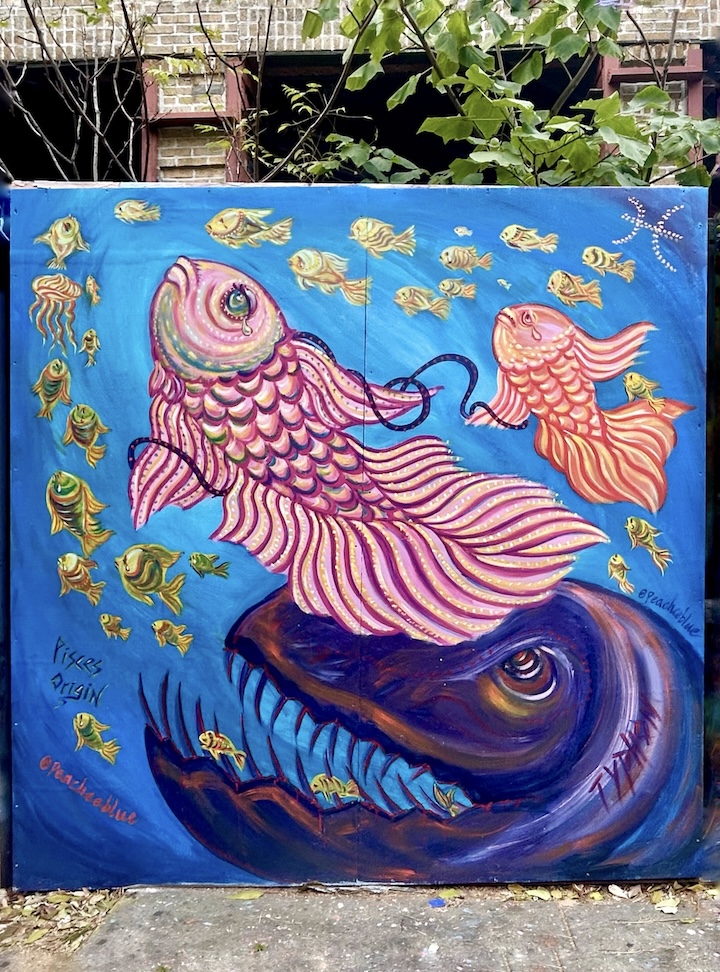
Note: Keep posted to the Street Art NYC Instagram and Threads for more images from “What’s Your Sign?”
Photos: Lois Stavsky
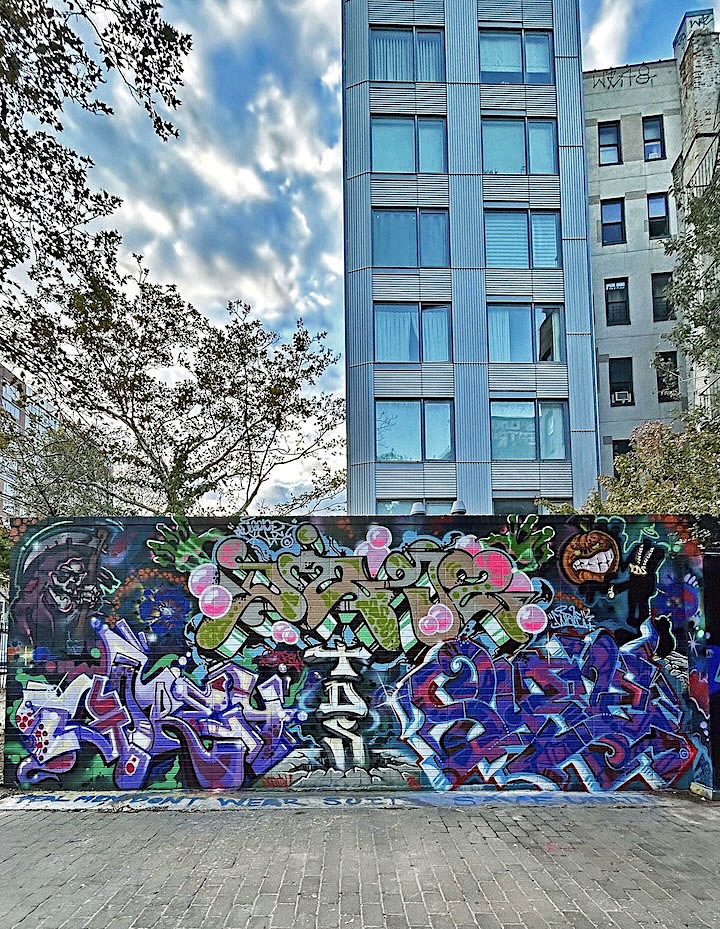
Home to a wonderfully diverse range of artworks, First Street Green Art Park continues to bring intrigue and charm to Houston Street and Second Avenue — where the Lower East Side meets the East Village. The bewitching image featured above was painted by stylemasters: Diego 127, Seb Gorey and Curve. What follows is a small selection of murals — curated under the direction of Jonathan Neville — captured on my recent visit to the park.
The playfully lovable Ratchi
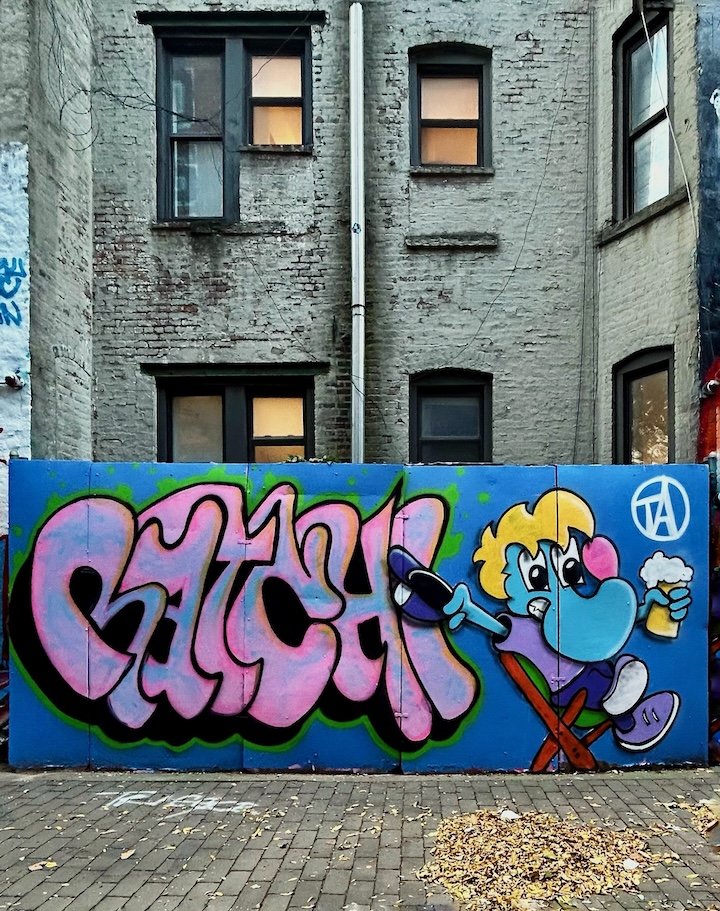
Veteran writer Mastro
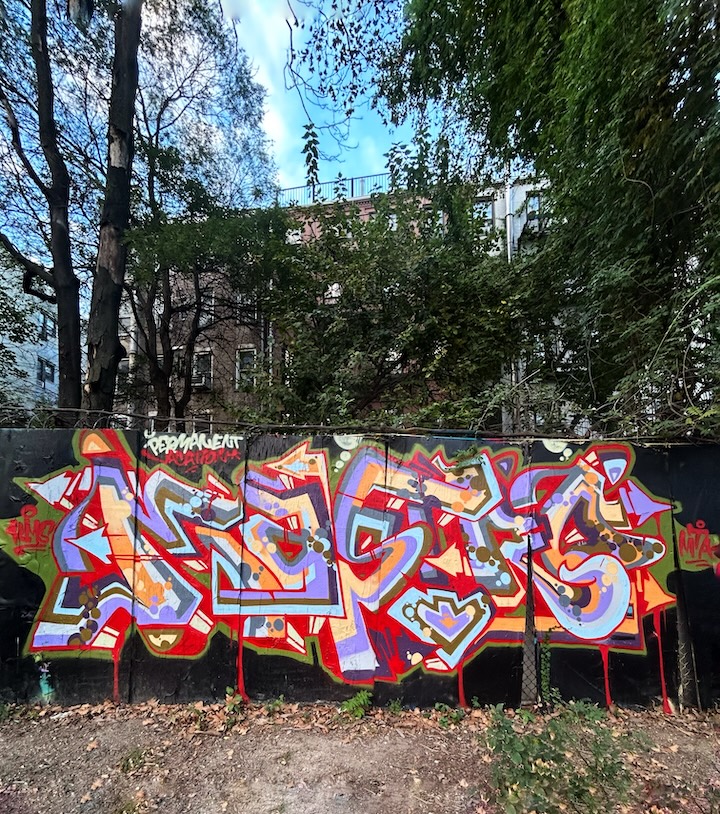
The ubiquitous OptimoNYC
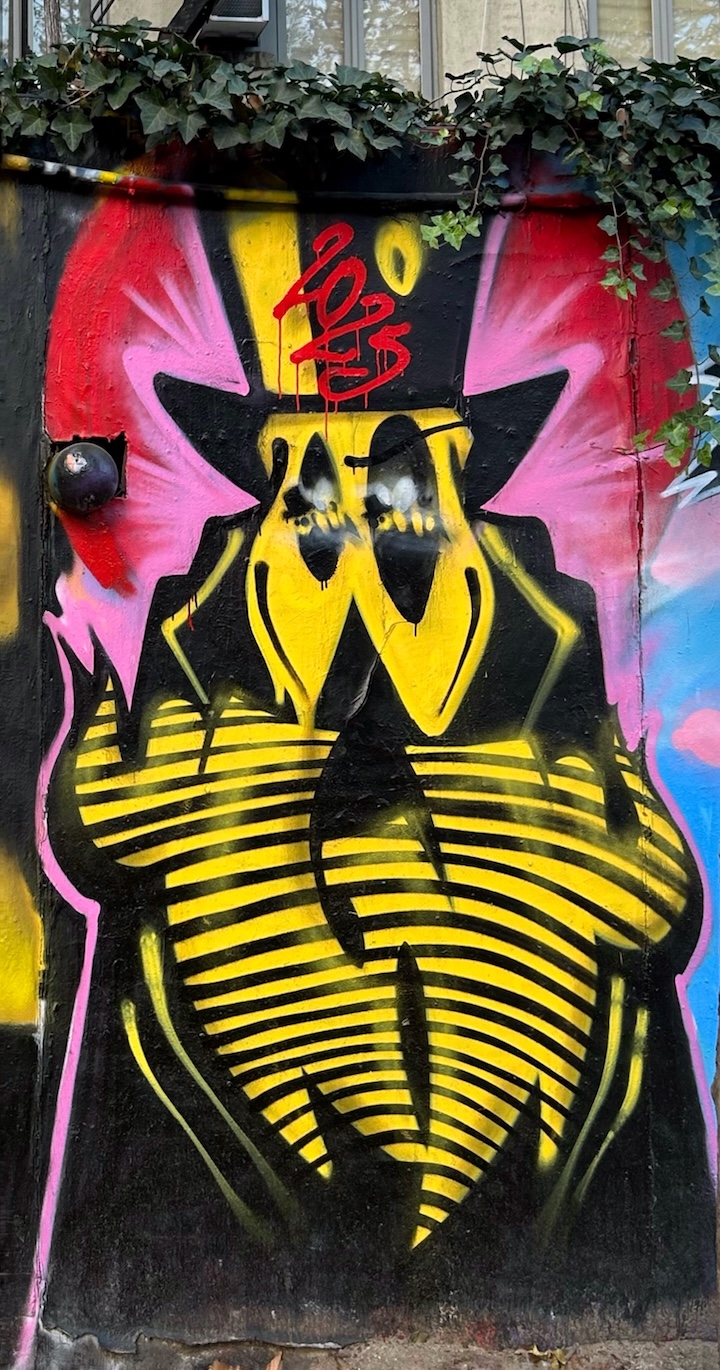
Tony Washington takes us back to KIDS with a tribute mural
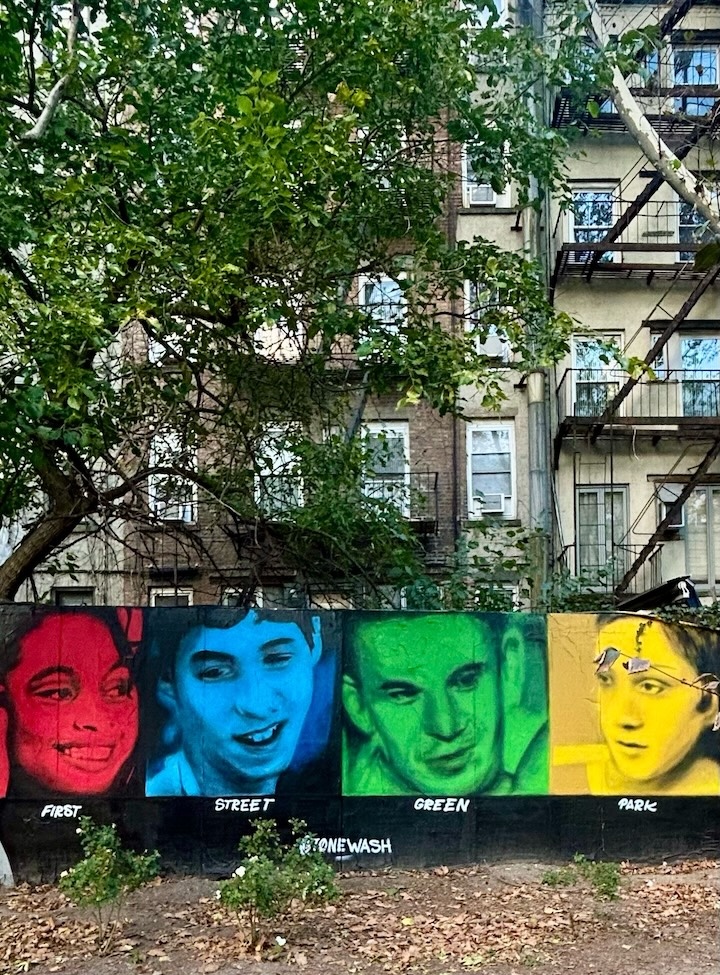
Hektad and Adam Dare share a message of LOVE
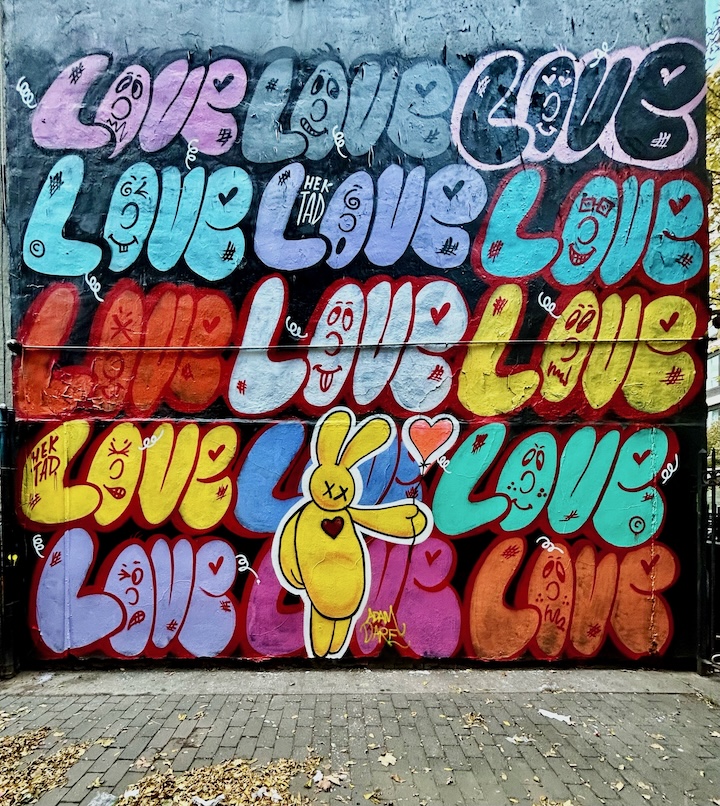
NSF crew member Bzee
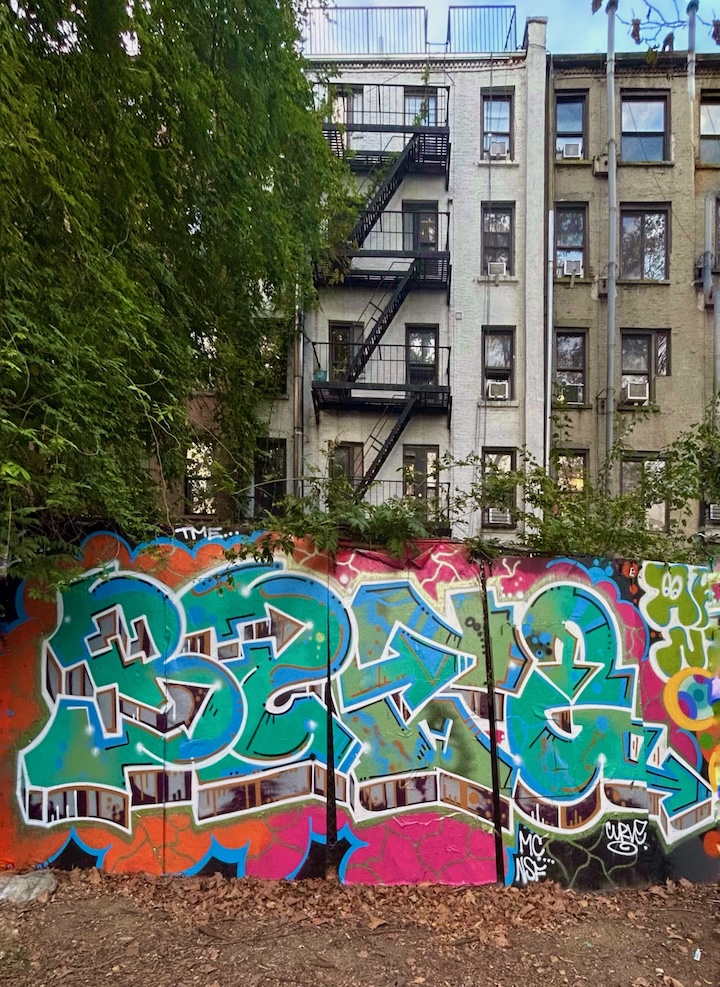
Photos: Lois Stavsky
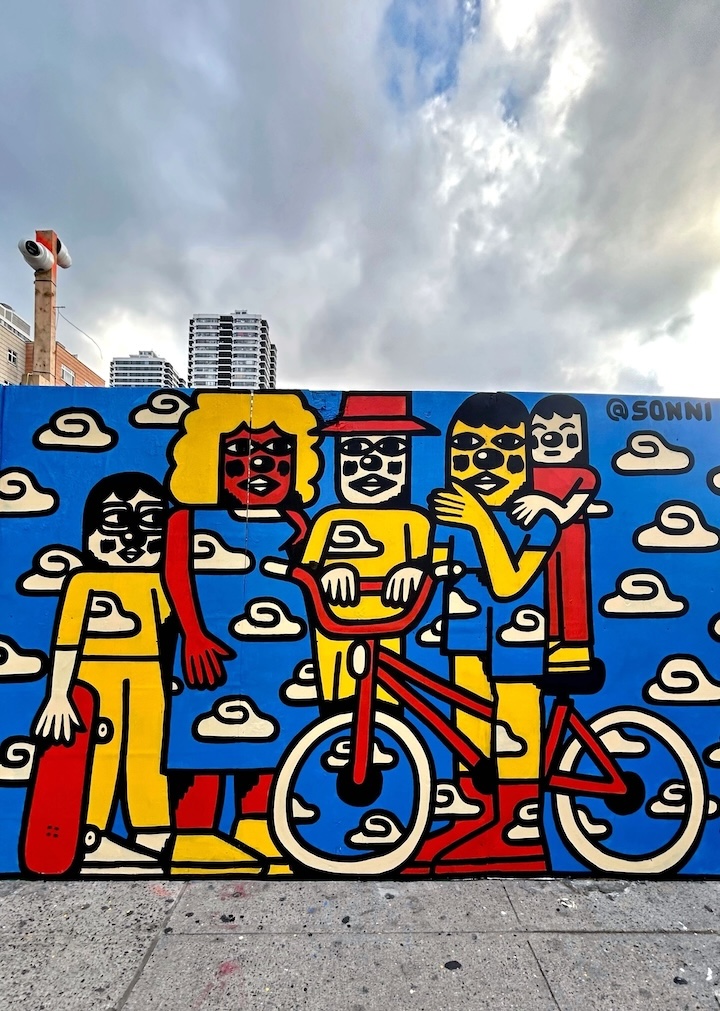
The beautification of East 125th Street and its adjacent blocks has continued into the fall as new murals surface each week. The ebullient artwork featured above was painted by the noted Buenos Aires- born, NYC-based artist Sonni, What follows are several more new murals, along with others painted earlier this year.
Bronx-based artist Taiitan
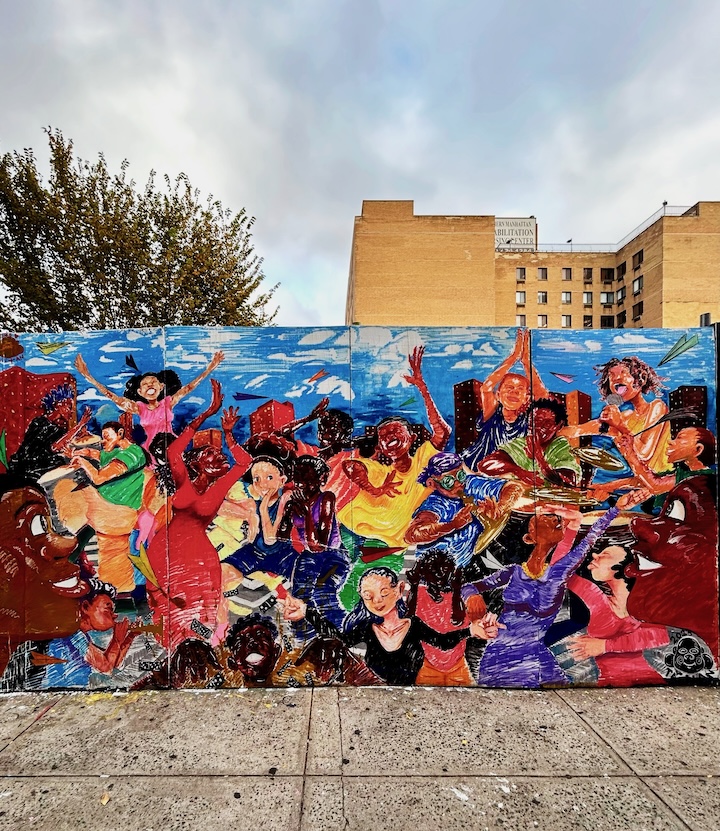
Bronx-based artist and arts educator KayLove
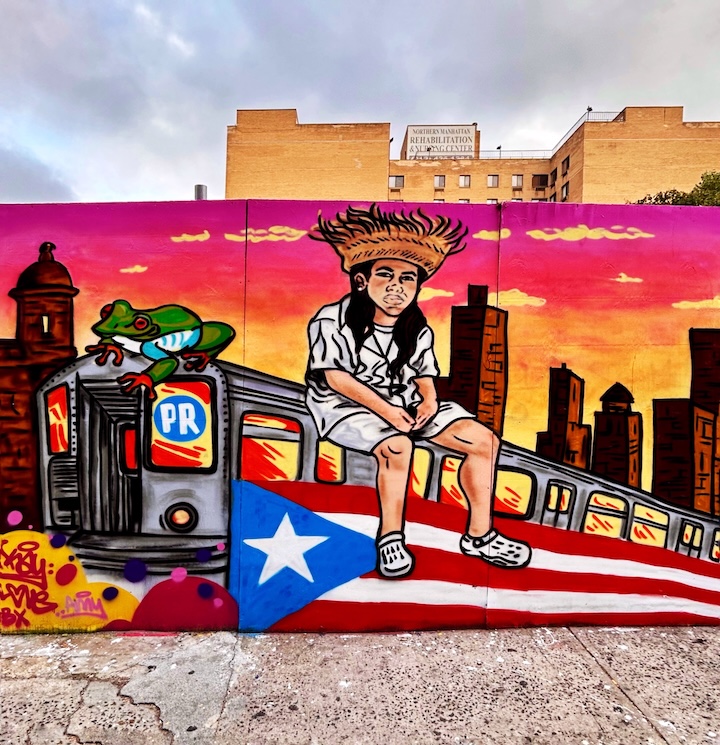
Rio de Janeiro-born, Brooklyn-based artist Barbtropolis

Madrid, Spain-born, NYC-based multidisciplinary artist Noah Xifr
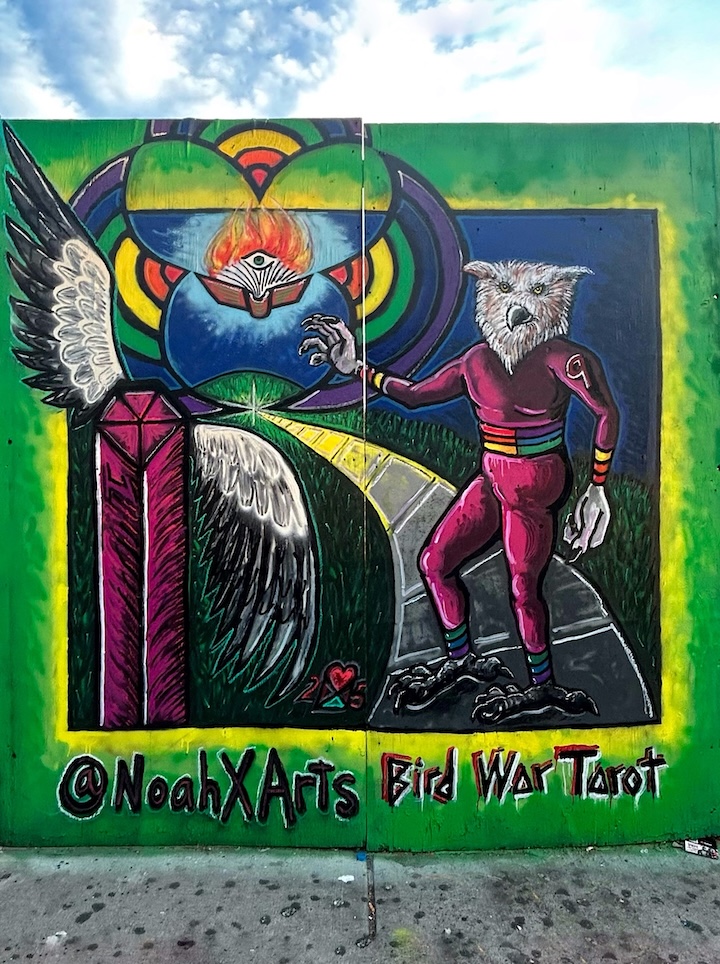
Washington Heights-born multidisciplinary artist Danny Peguiro
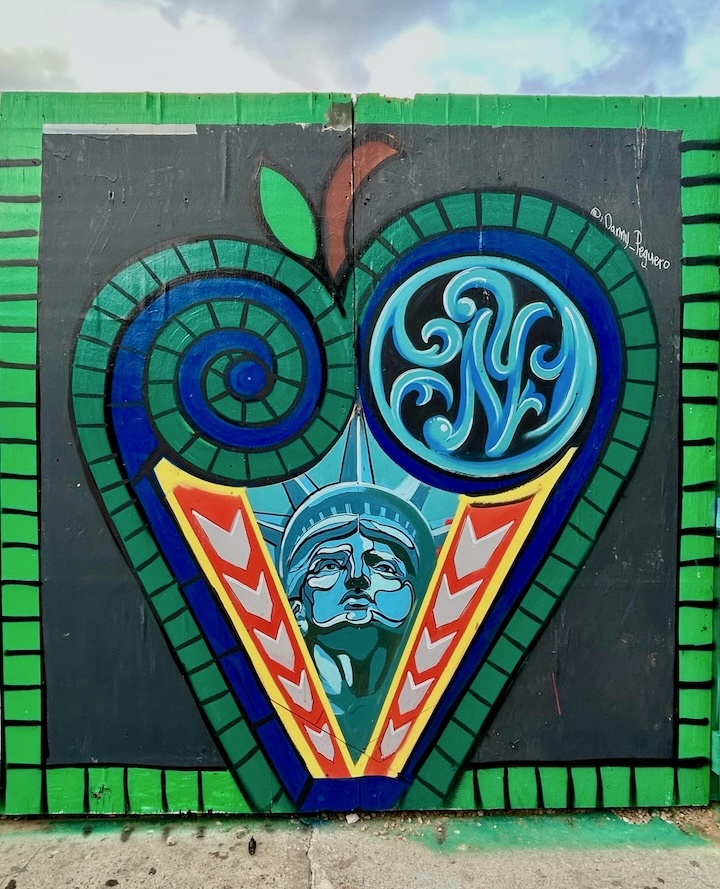
Bronx-based artist Chelsea Garcia
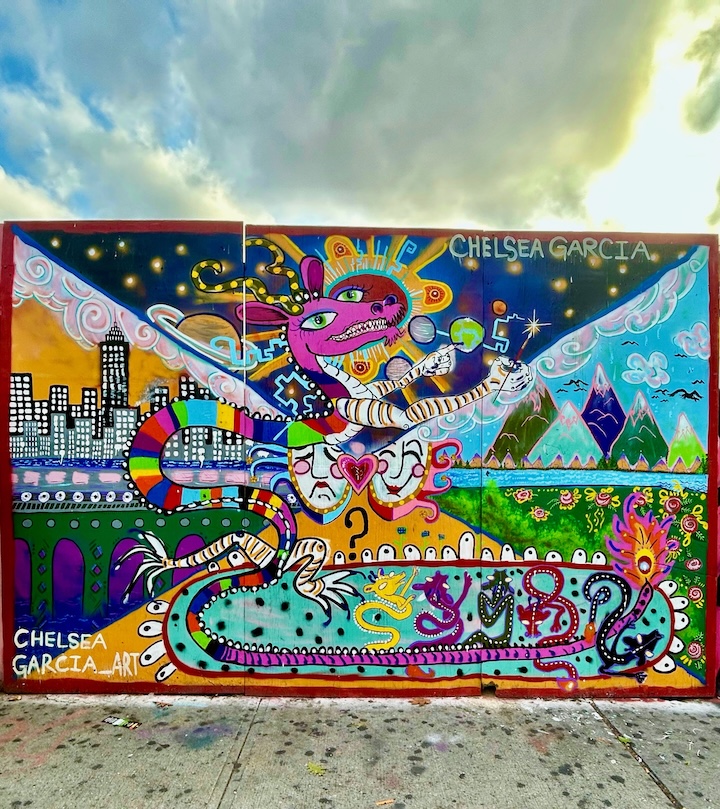
Photos: Lois Stavsky
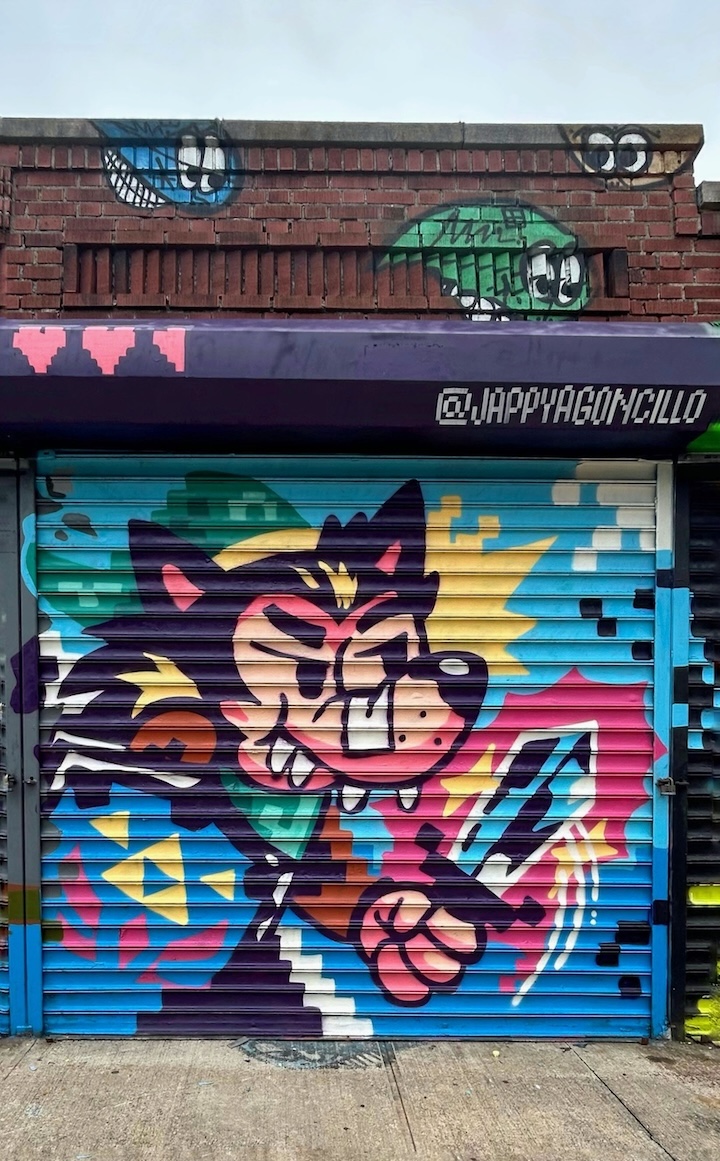
The chillingly playful shutter featured above was painted by Philippines-born, Queens-based artist Jappy Agoncillo at Welling Walls in Astoria, Queens. What follows are several more images of gates as we continue our ongoing series of NYC street art shutters.
Madrid, Spain-born multidisciplinary artist Noah Xifr also at Welling Walls in Astoria, Queens.
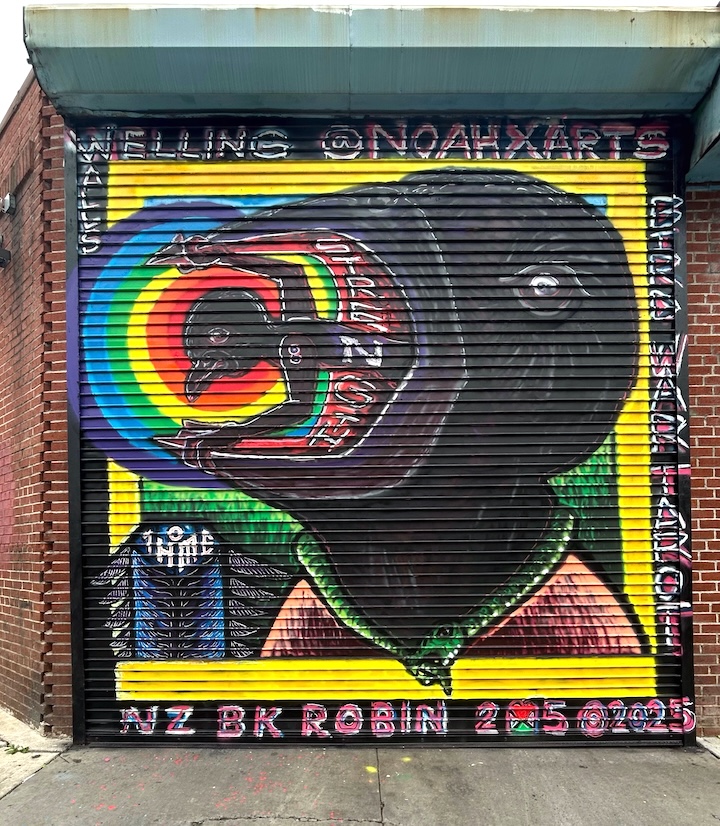
The lovable Ratchi on the Lower East Side
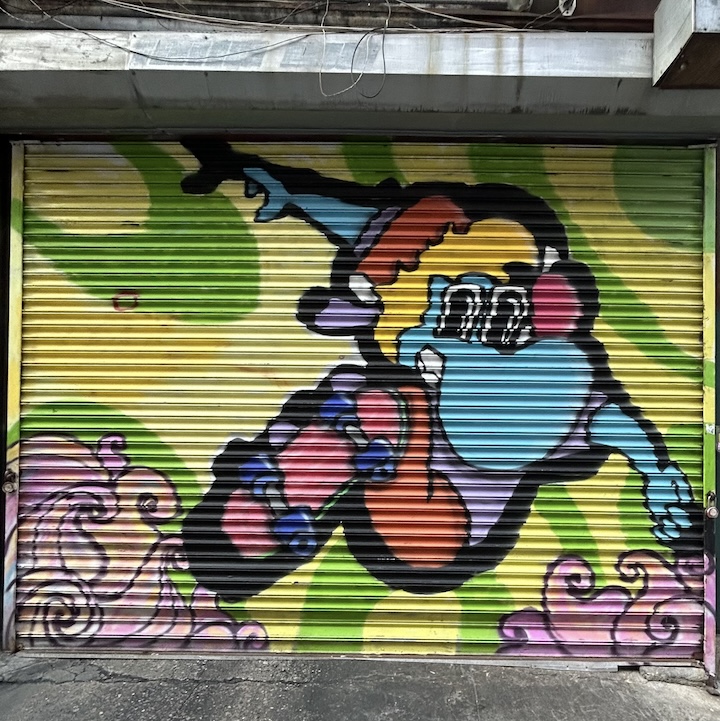
Bogota-native Calicho Arevalo at Welling Walls in Astoria, Queens
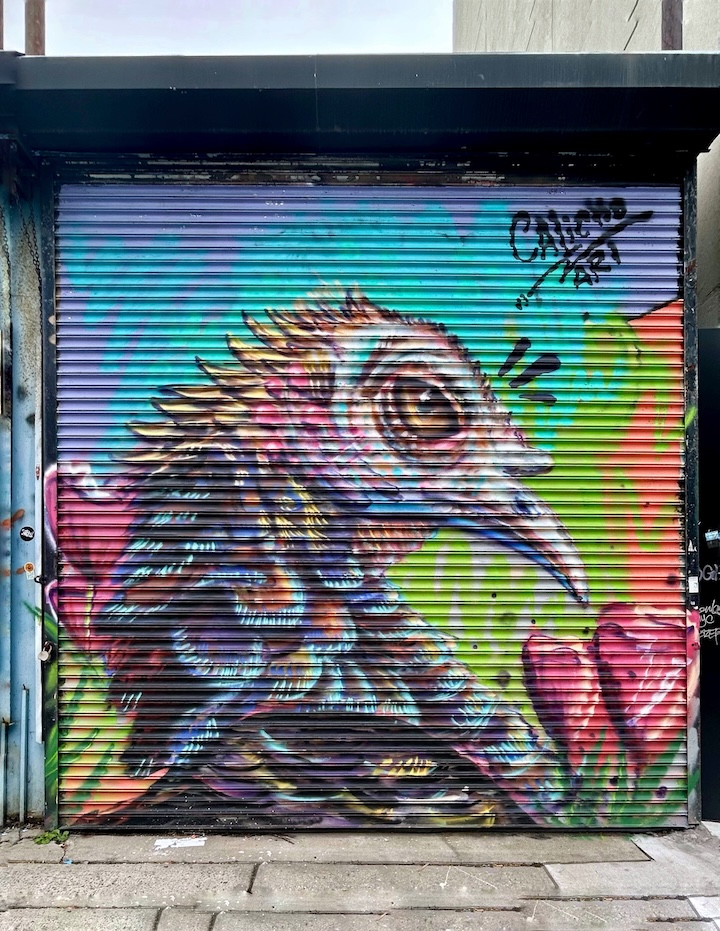
Colombian artist Leo2, French artist Vast & Dek on the Lower East Side
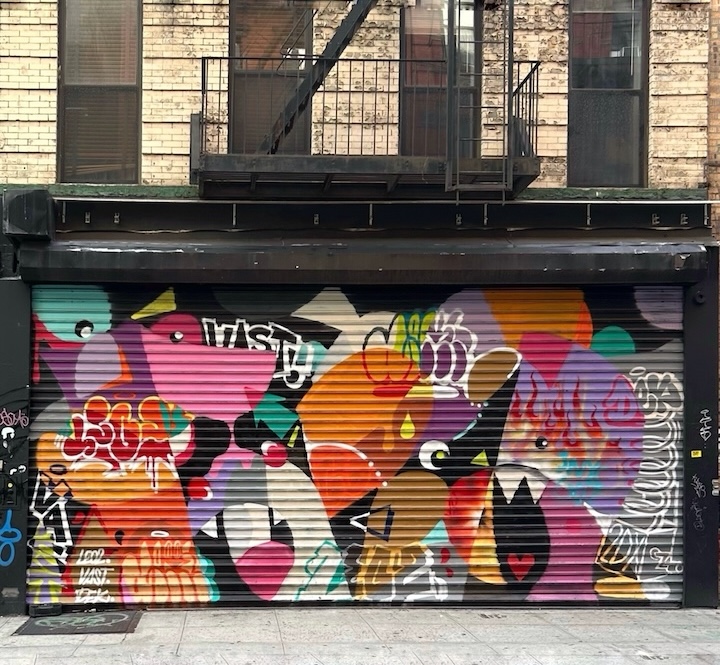
Brooklyn-based, Newark-raised Peruvian artist GERALUZ in East Harlem

The legendary Bronx native artist T-Kid on the exterior of Bronxlandia in Hunts Point, Bronx
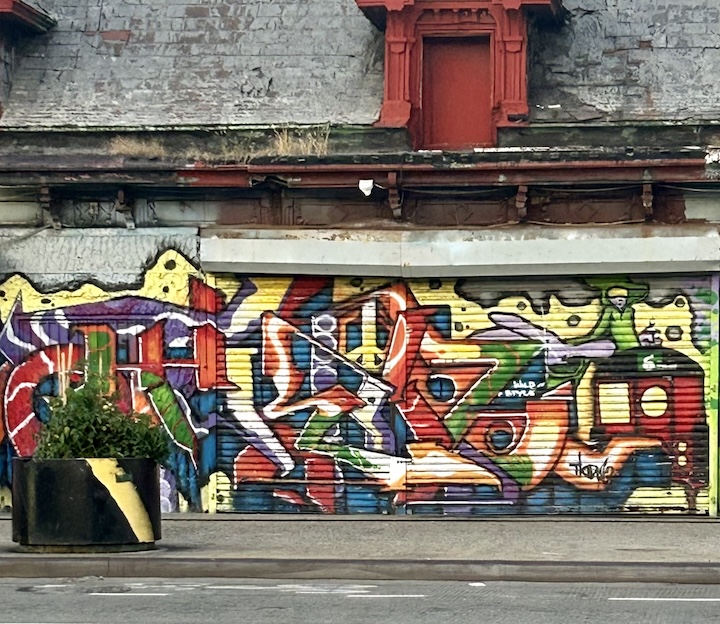
Photos by Lois Stavsky
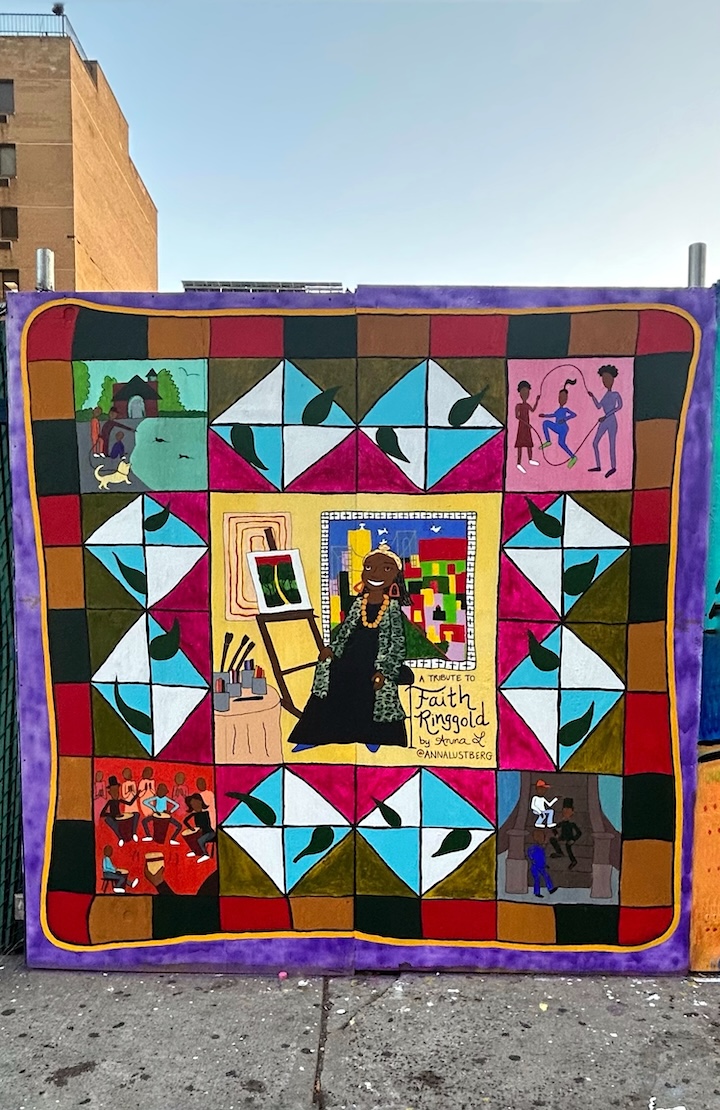
During these past few months, the murals along East 125 Street and its surrounding blocks continued to beautify East Harlem with intrigue and charm. The homage to the late Harlem-born artist Faith Ringgold — featured above — was painted by NYC-based, New Jersey-bred artist Anna Lustberg.
What follows is a selection of images captured in our continued 2025 documentation of Uptown Grand Central:
Anna Lustberg poses in front of her mural while in progress
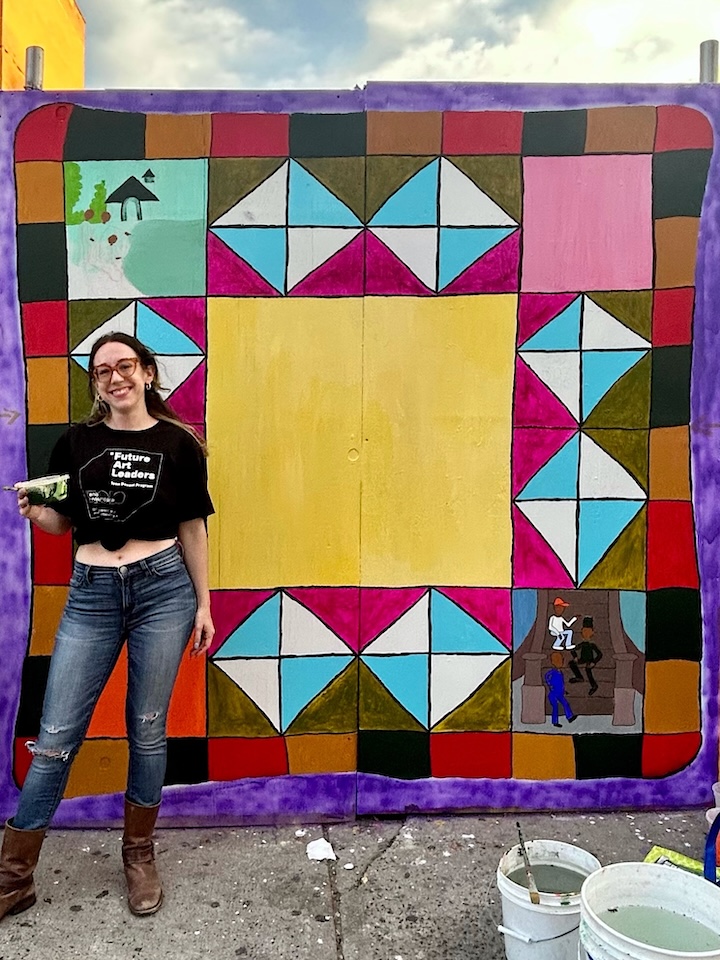
Bronx-based Lola Lovenotes
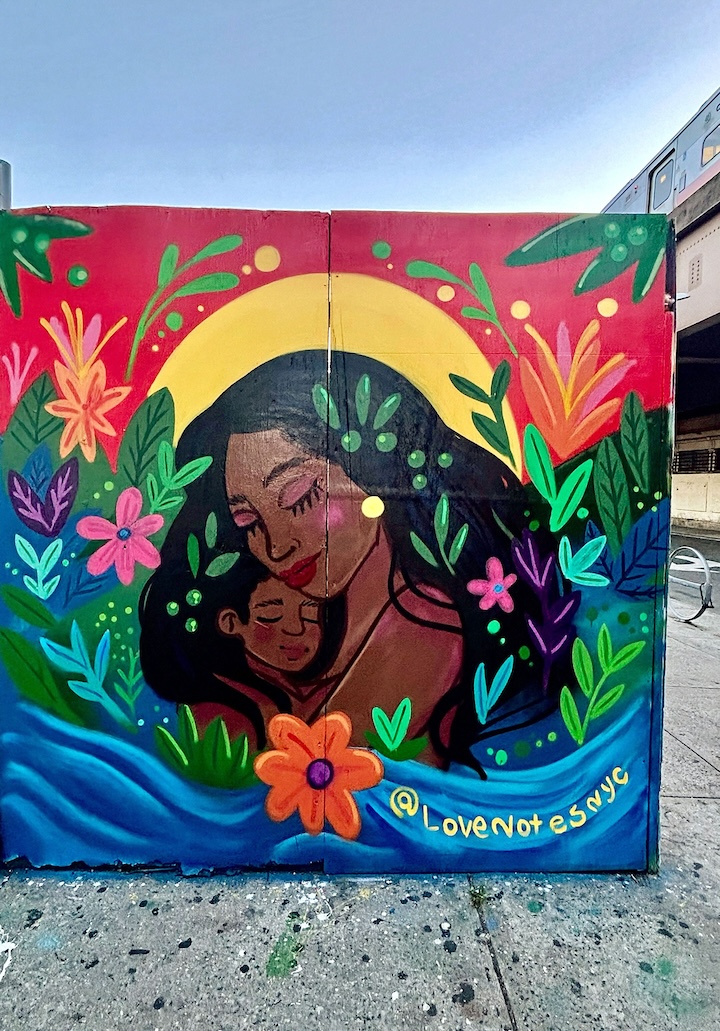
Yonkers-based Evan Bishop
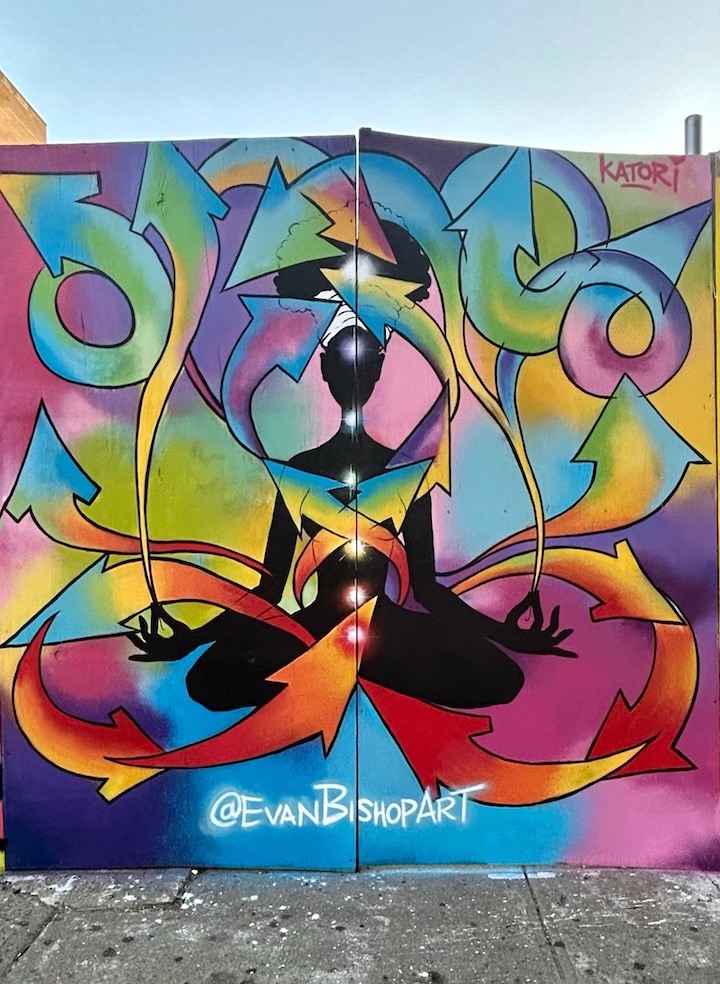
Colombian artist Alexis Duque
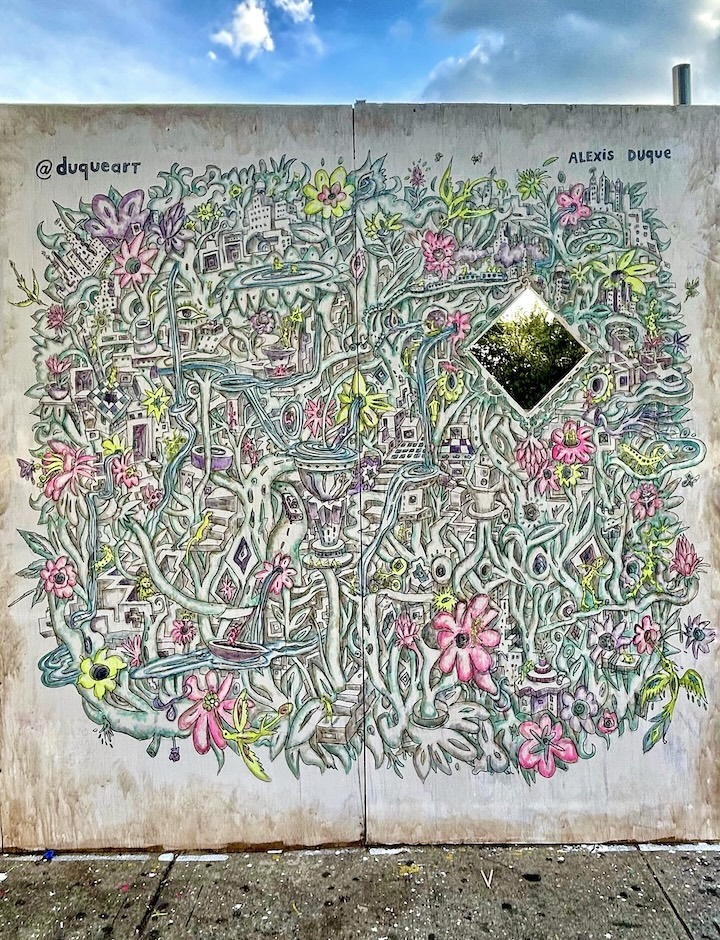
Bronx-based KingBee
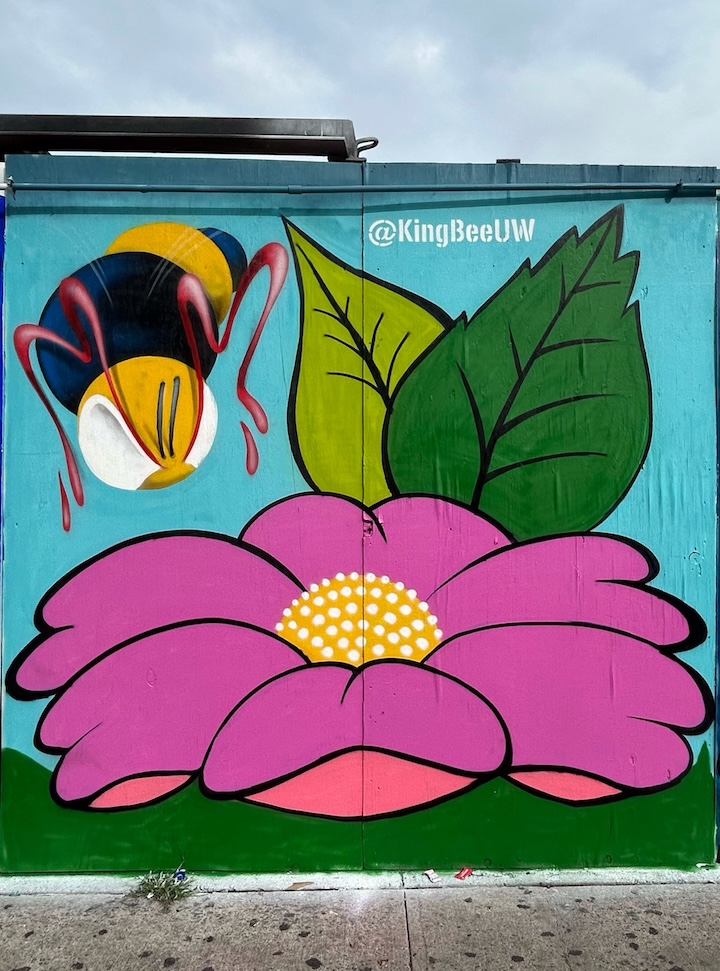
Newark-based Diego Molina
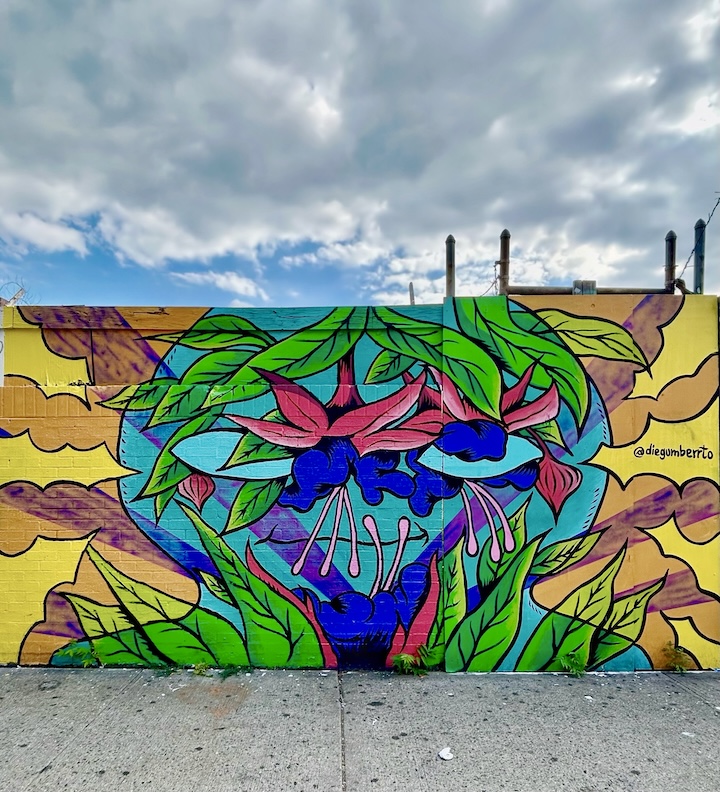
Photos: Lois Stavsky
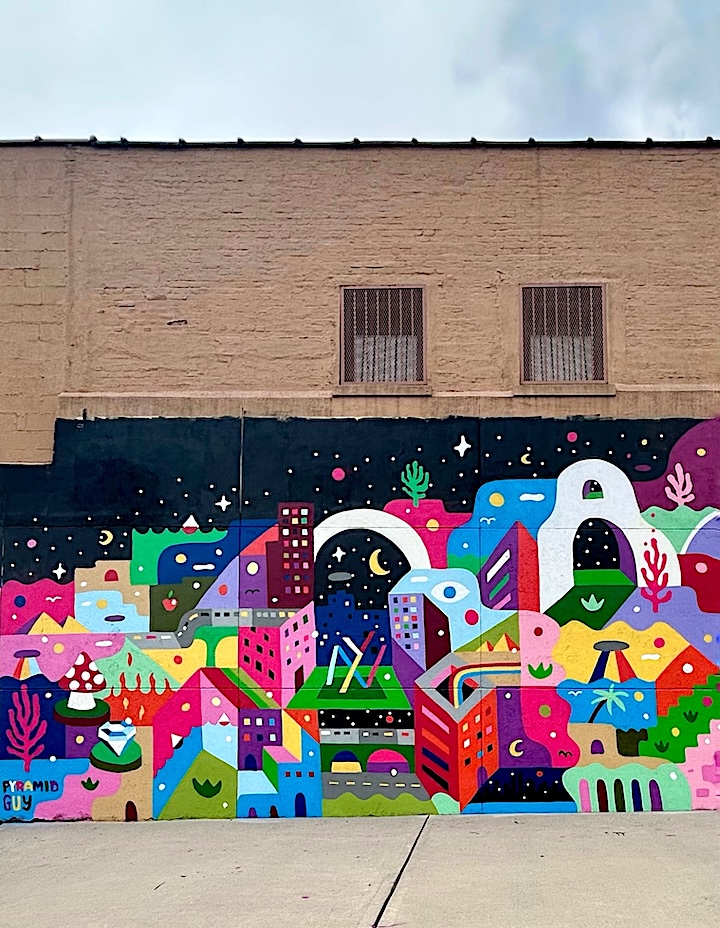
Founded and directed by legendary Bronx graffiti artist WEN COD, Boone Avenue Walls continues to transform the historic South Bronx Mott Haven neighborhood into an open air gallery — showcasing masterful murals and mesmerizing graffiti. The mural pictured above was painted by Oklahoma City-based artist Pyramid Guy. What follows is a small sampling of artworks we captured while visiting Mott Haven:
Local style master Soze
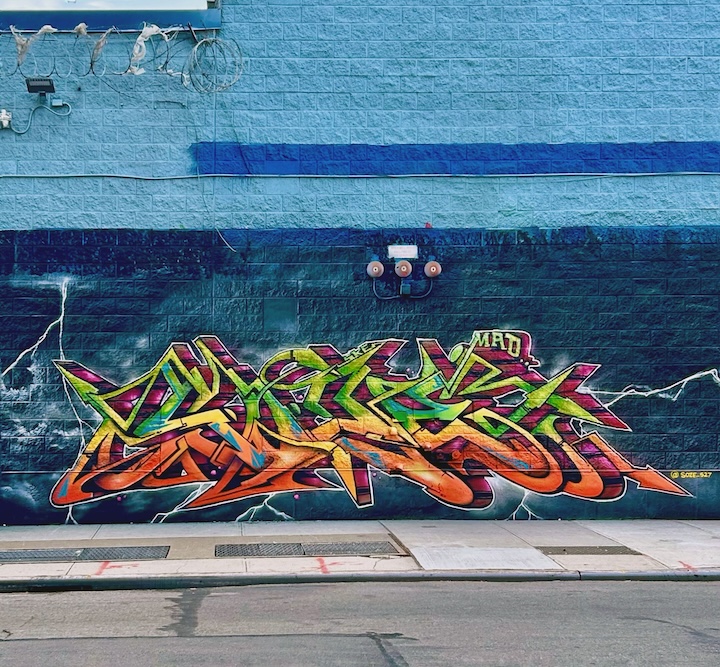
Classic Bronx graffiti writer Ovie
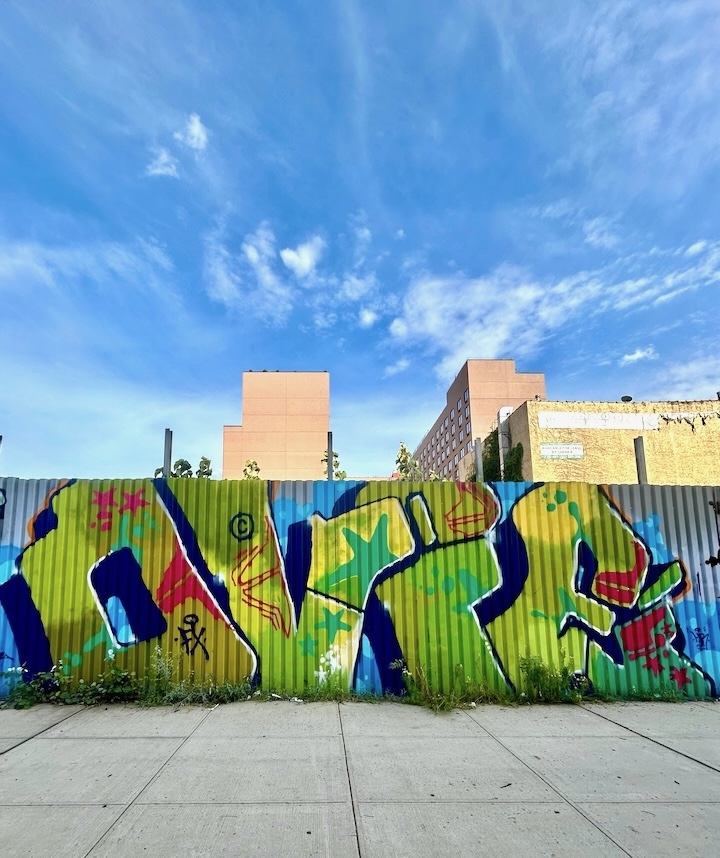
Veteran writer and skateboarder Cycle
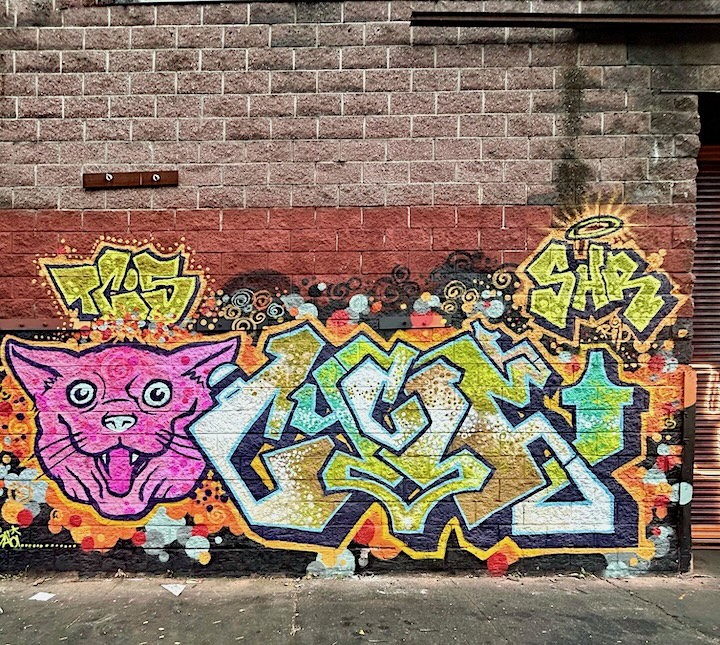
Connecticut’s masterful 3Modes, TVT
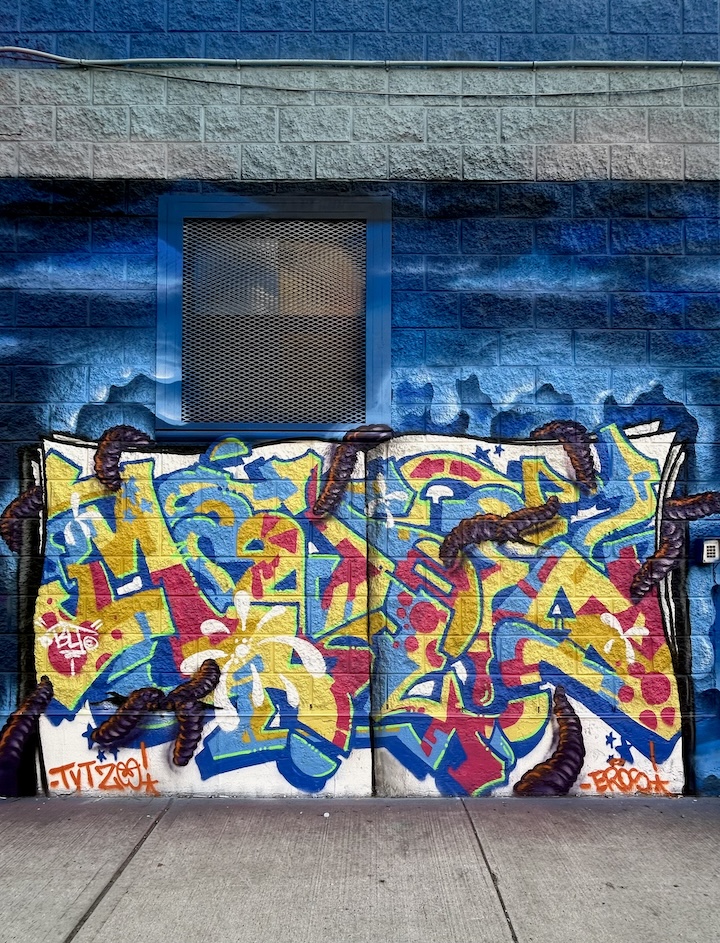
Algeria-born, NYC-based Pazzesco with his portrait of Biggie
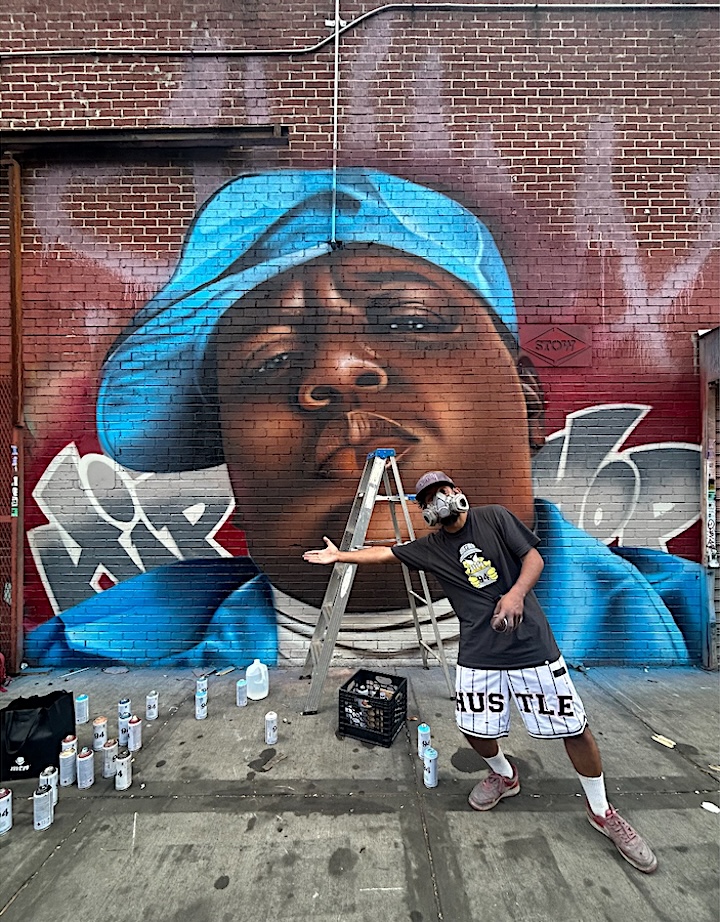
The wildly distinctive stylist KA, detail from TVT ZOO Goosebumps production
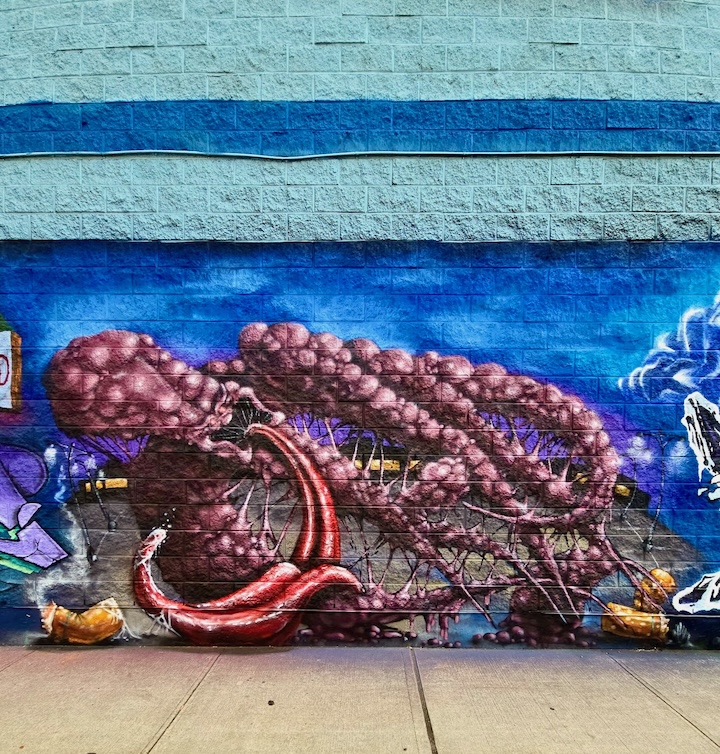
Colombia-born, New Jersey-based Jose Bustamante aka Busta
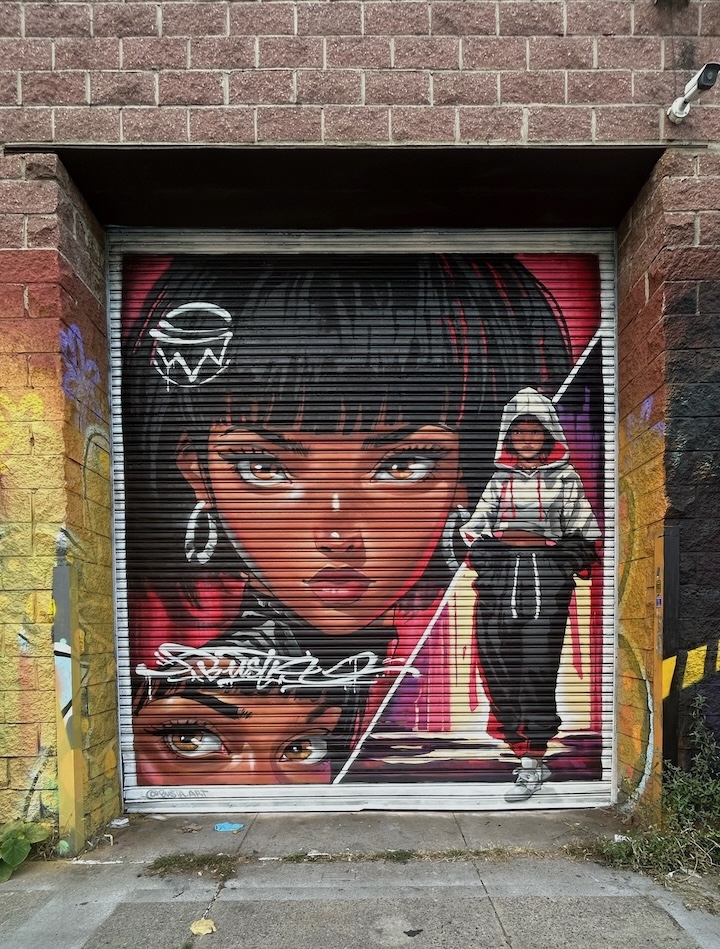
Bolivia-born, Florida-based Ales Delpincel‘s portrait of Nas
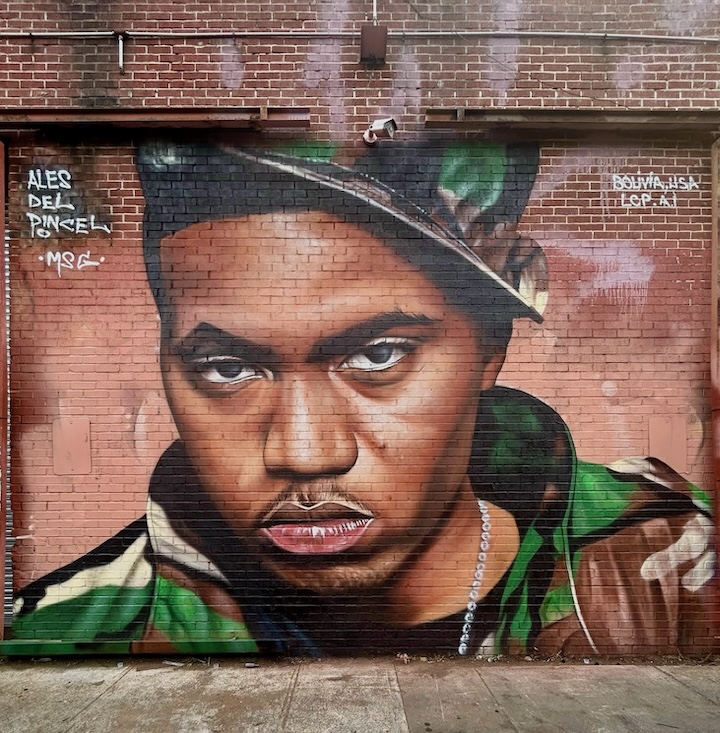
Photos: 1-6, 8 & 9 Lois Stavsky; 7 Tara Murray







































